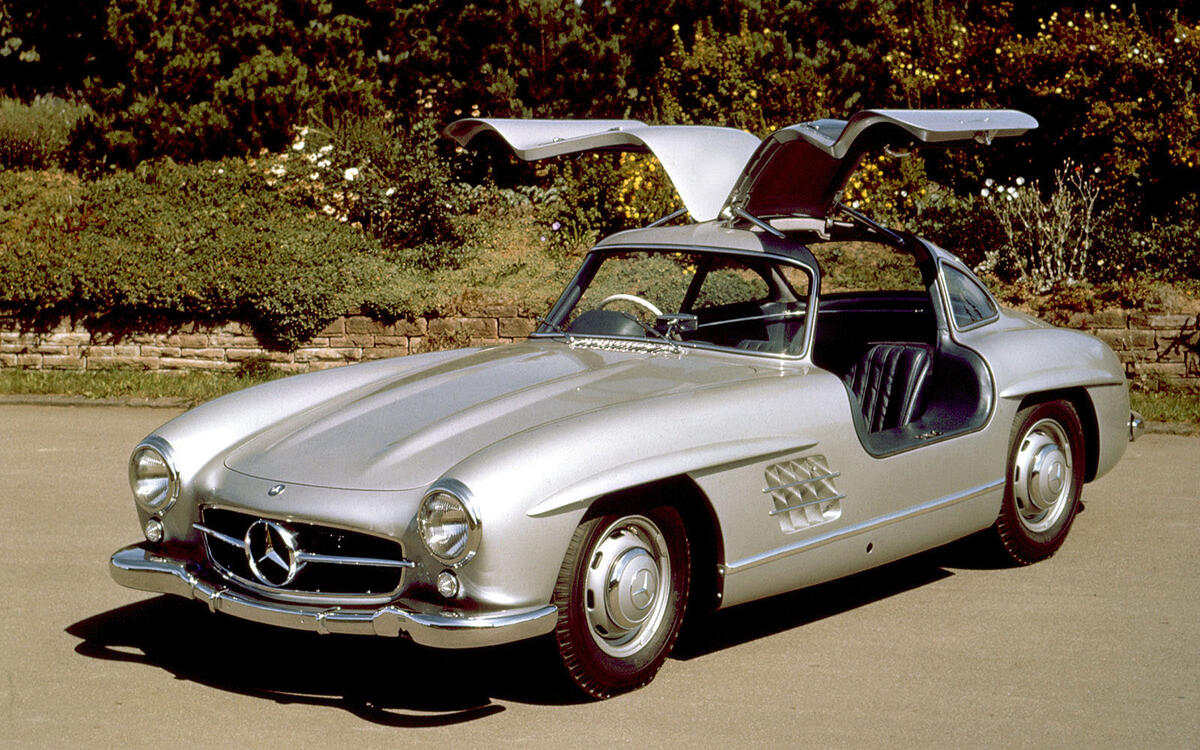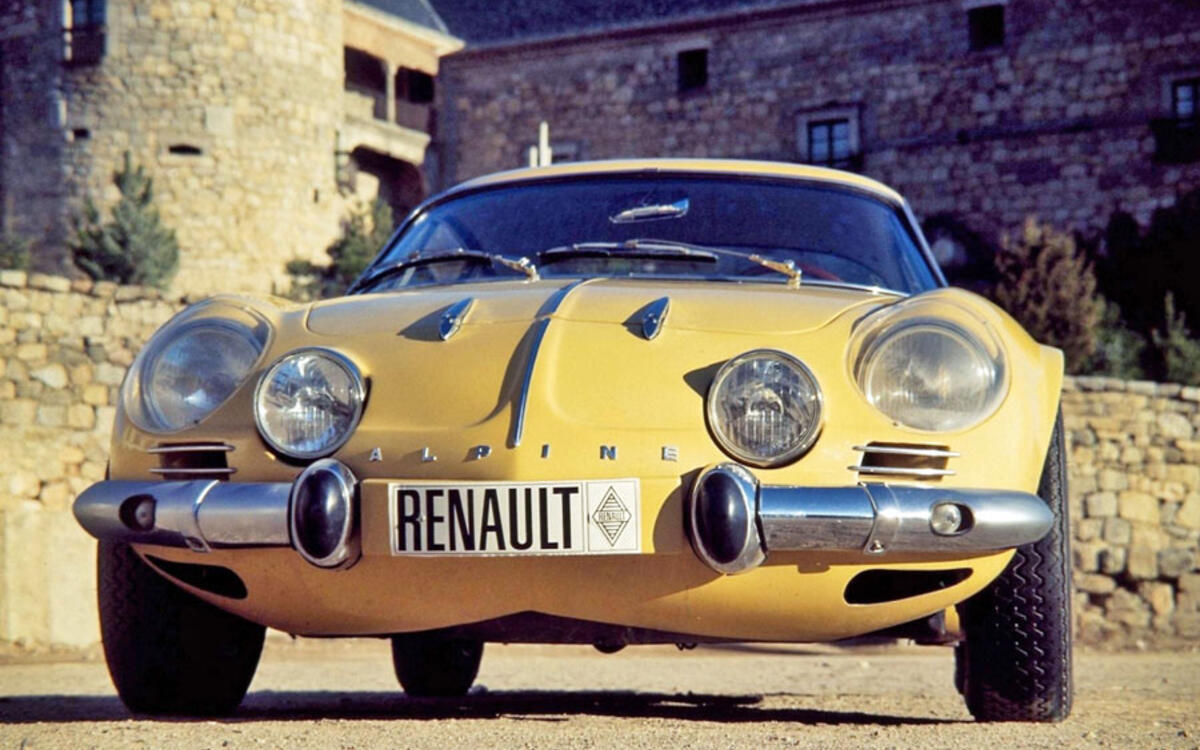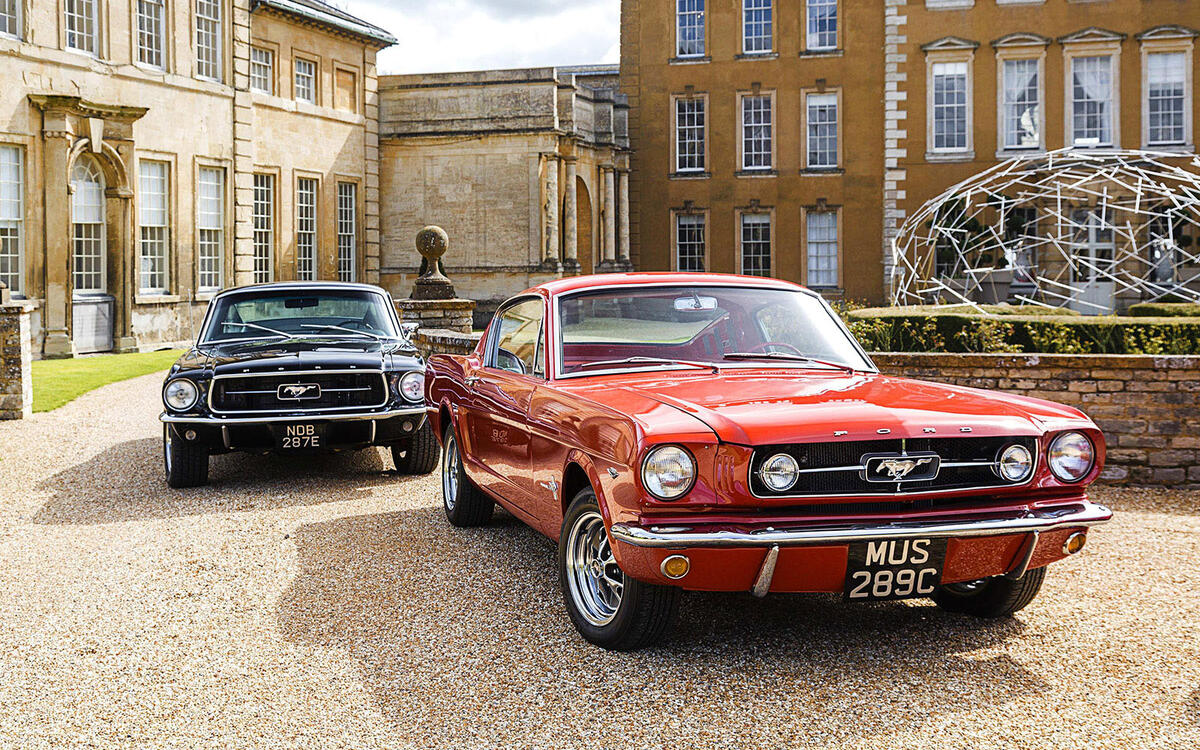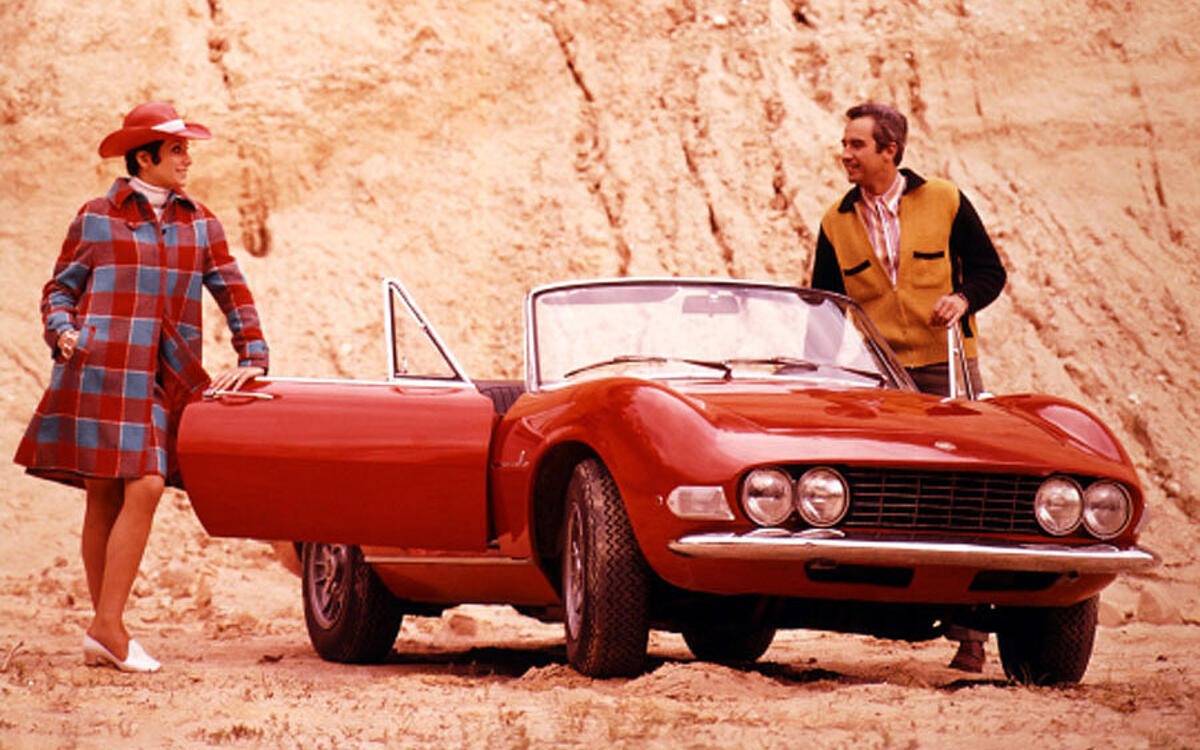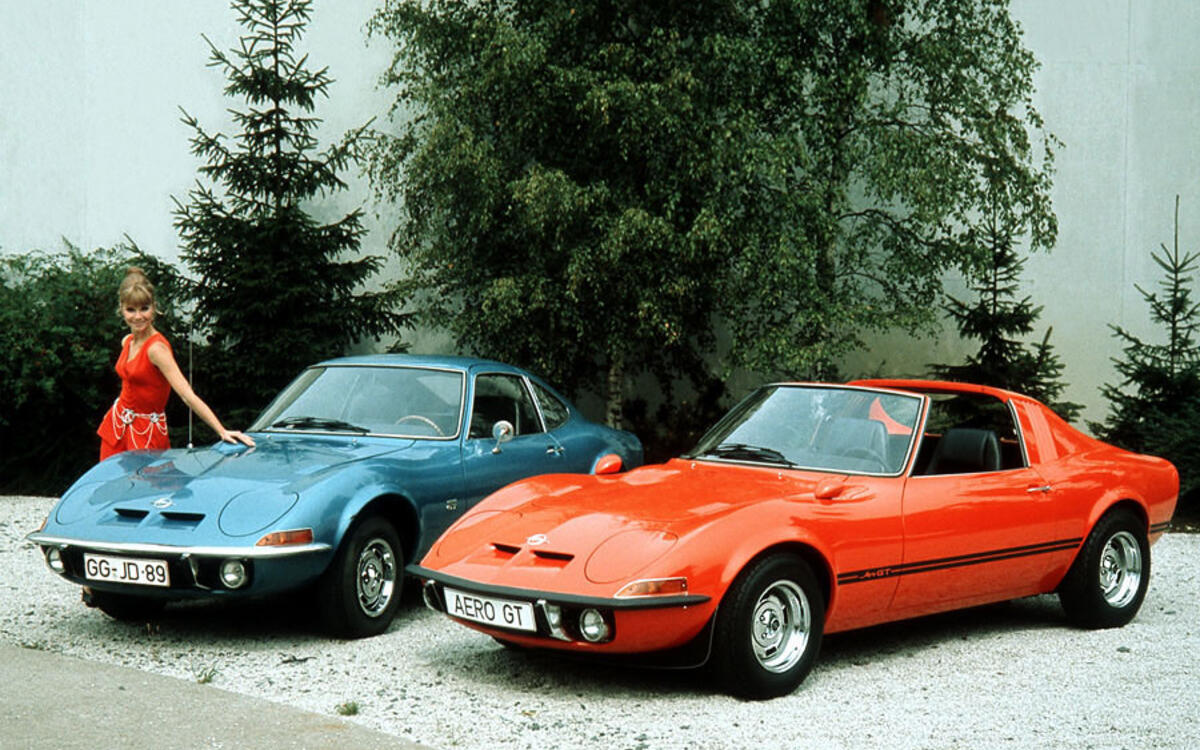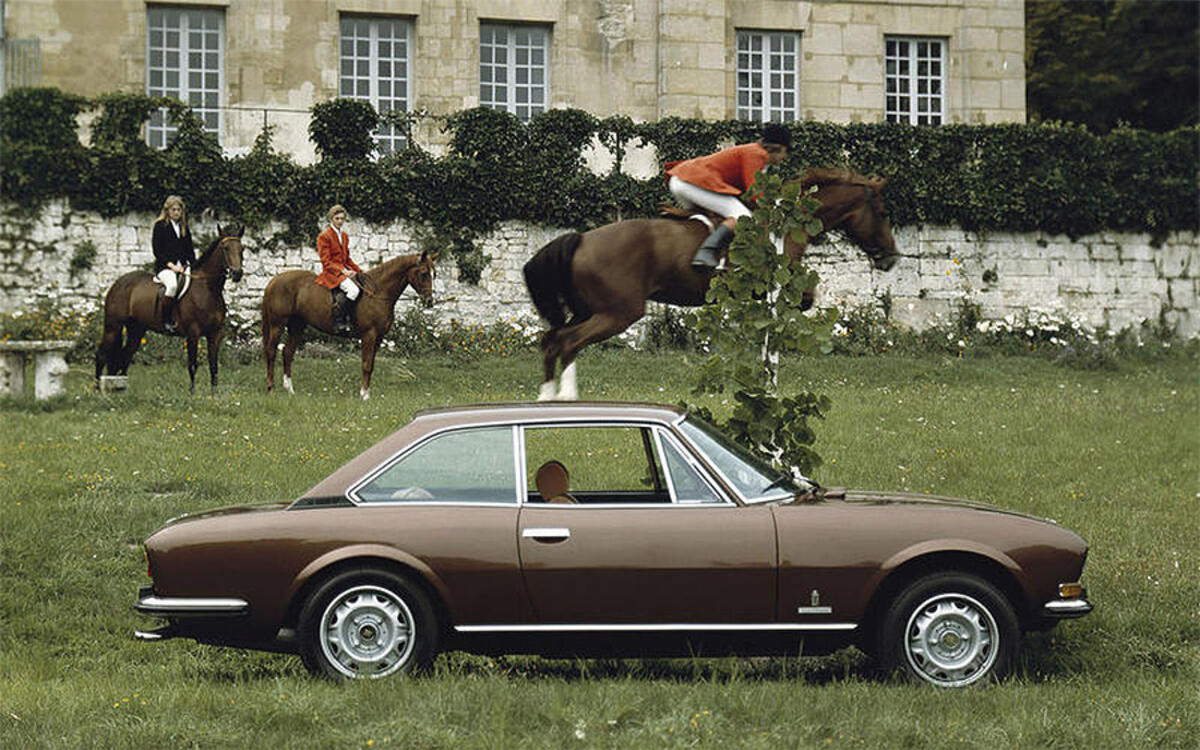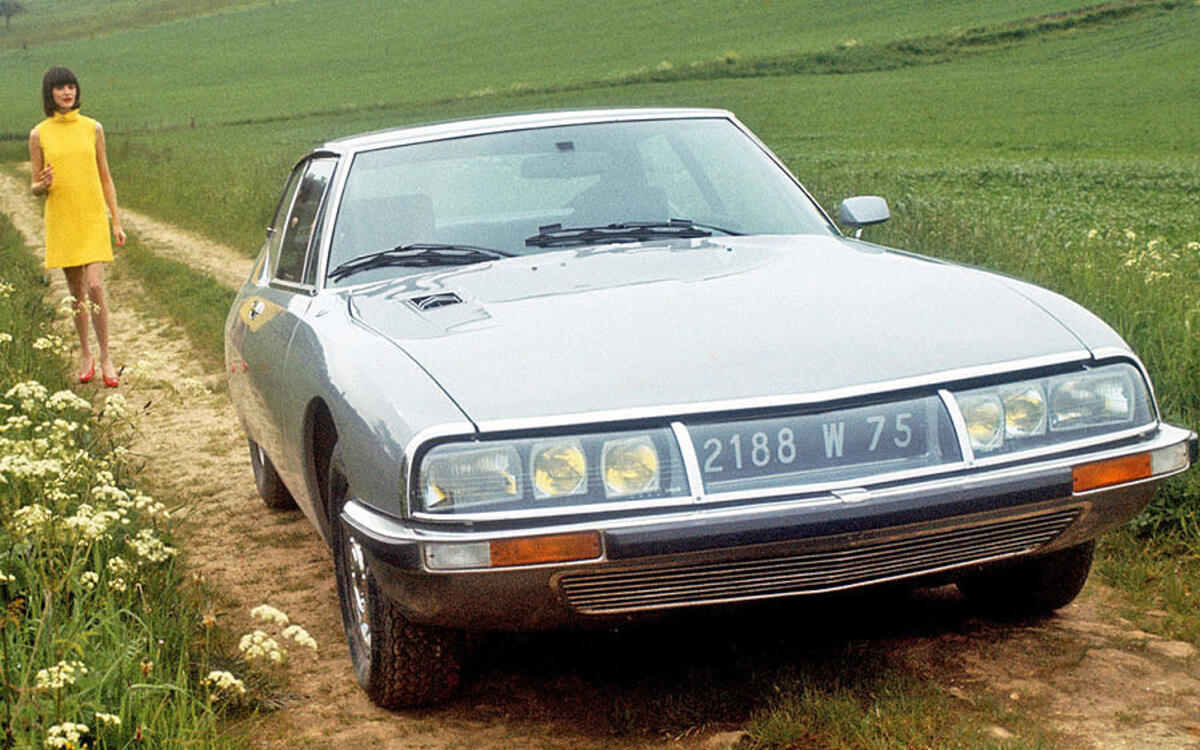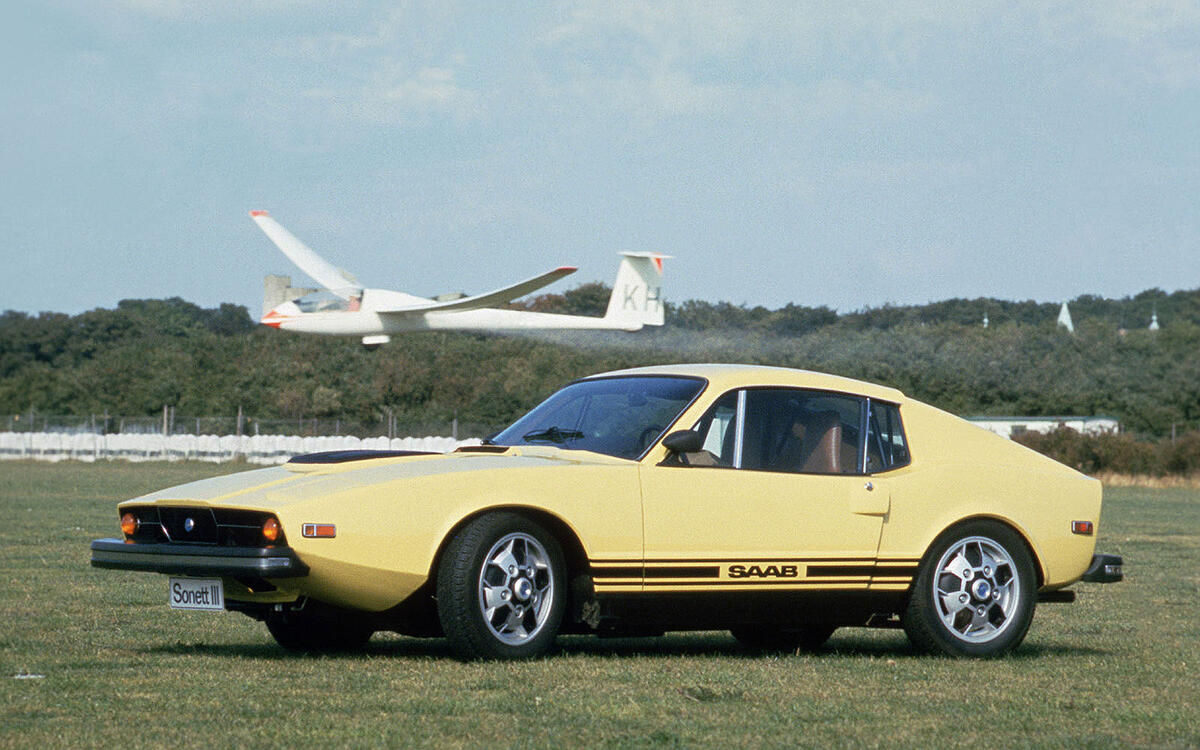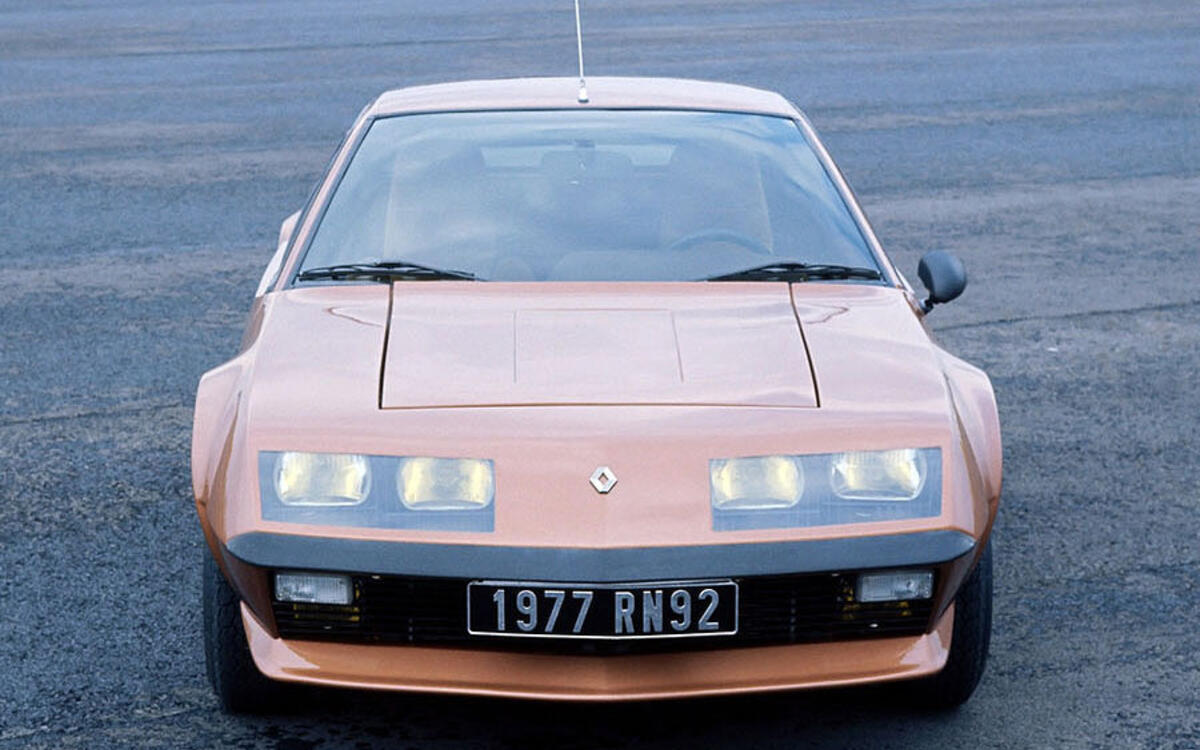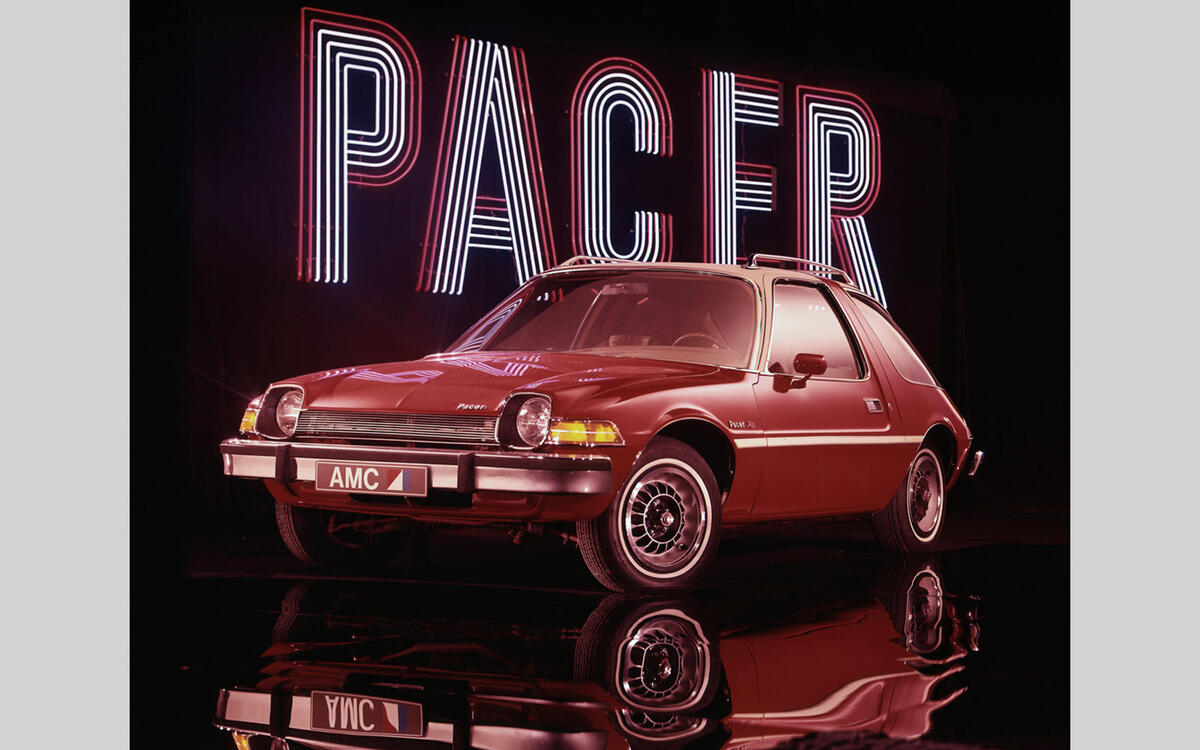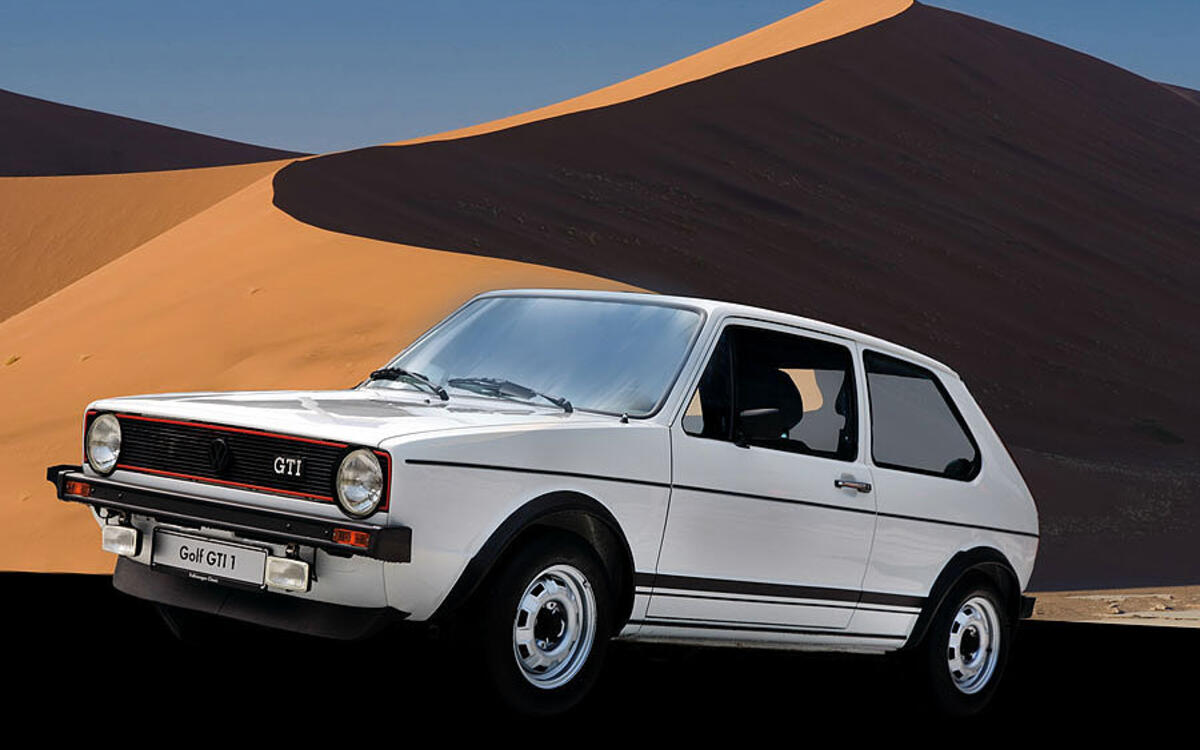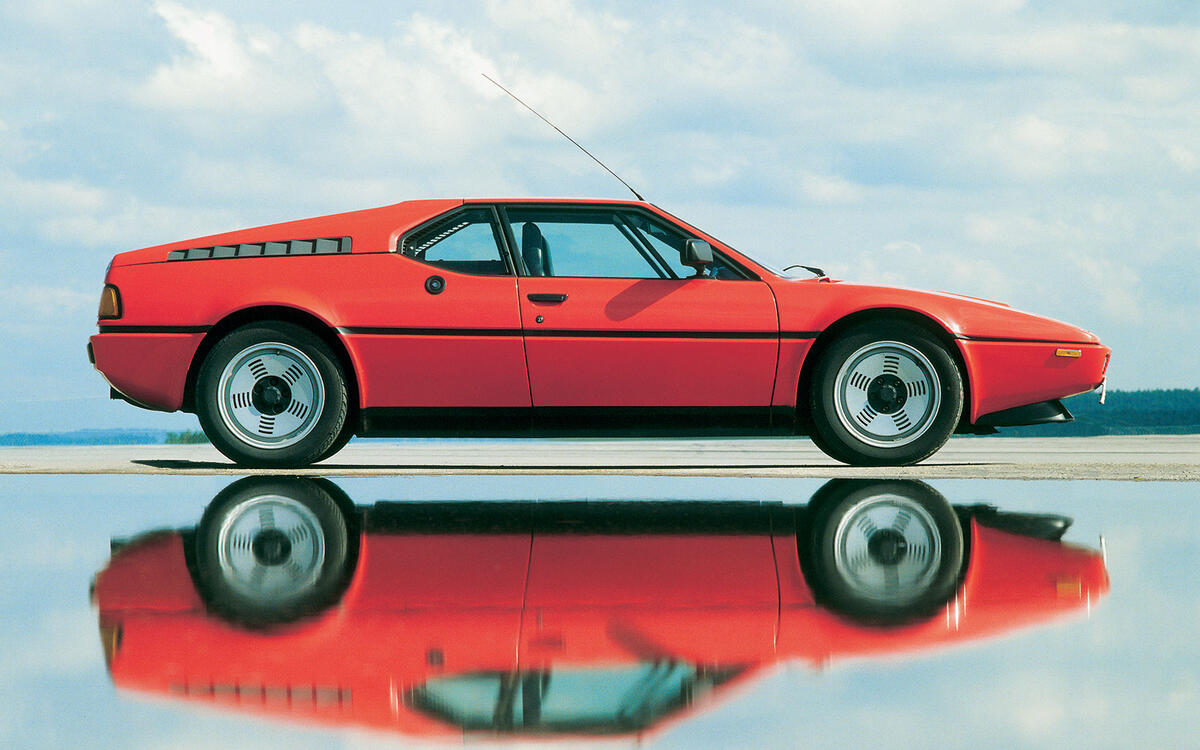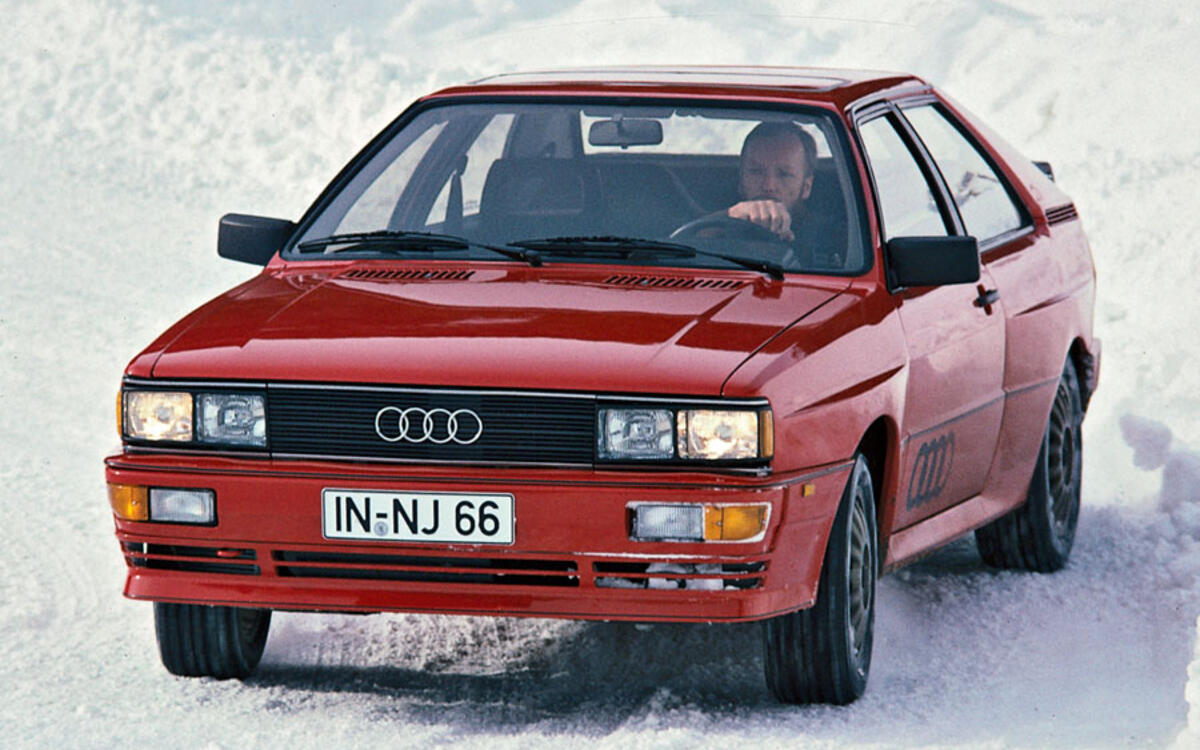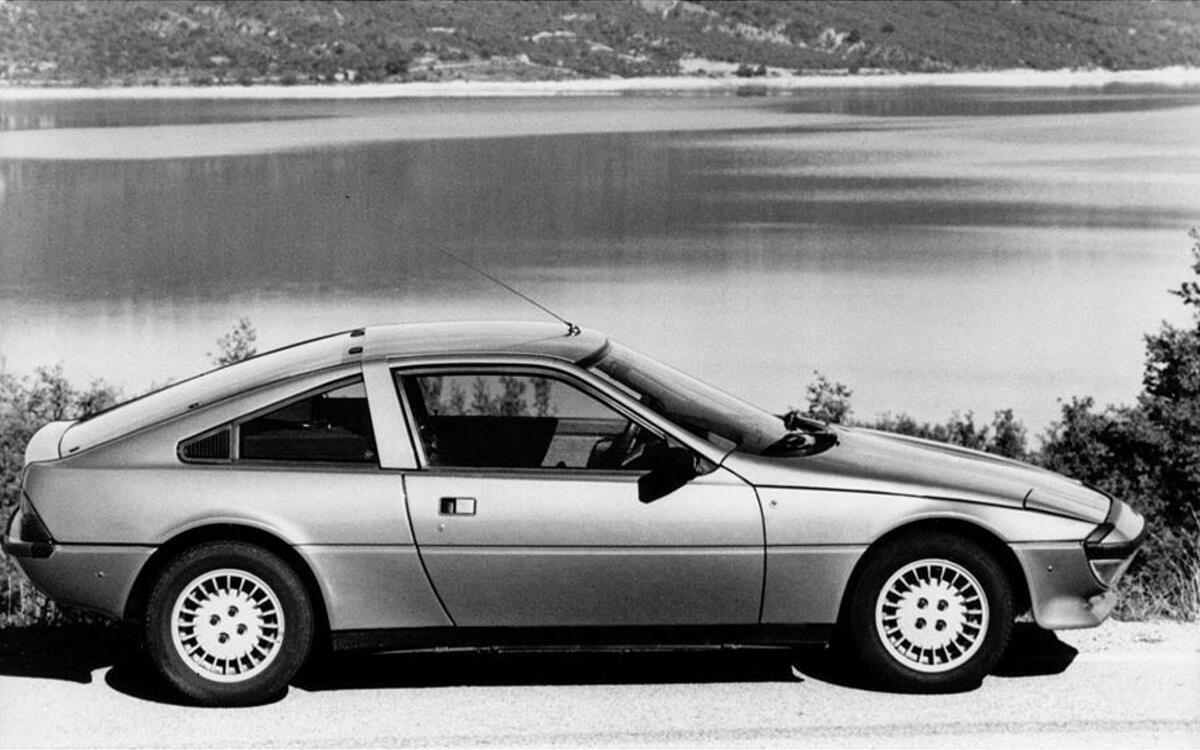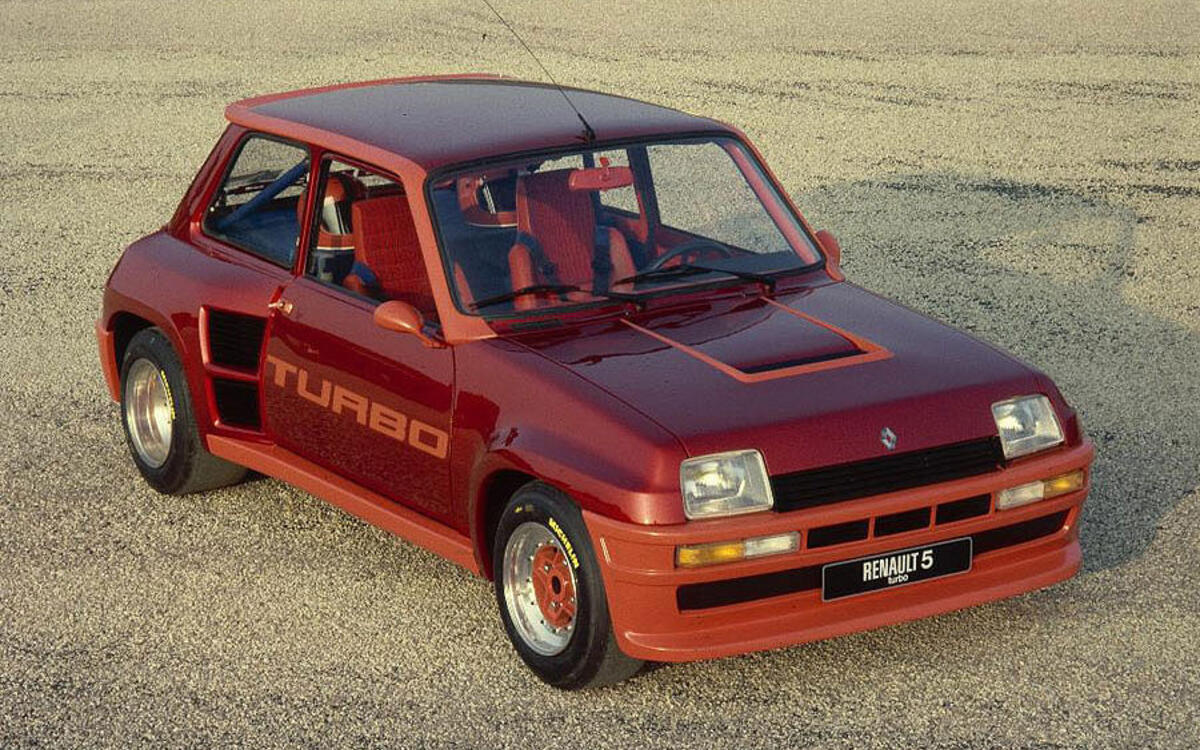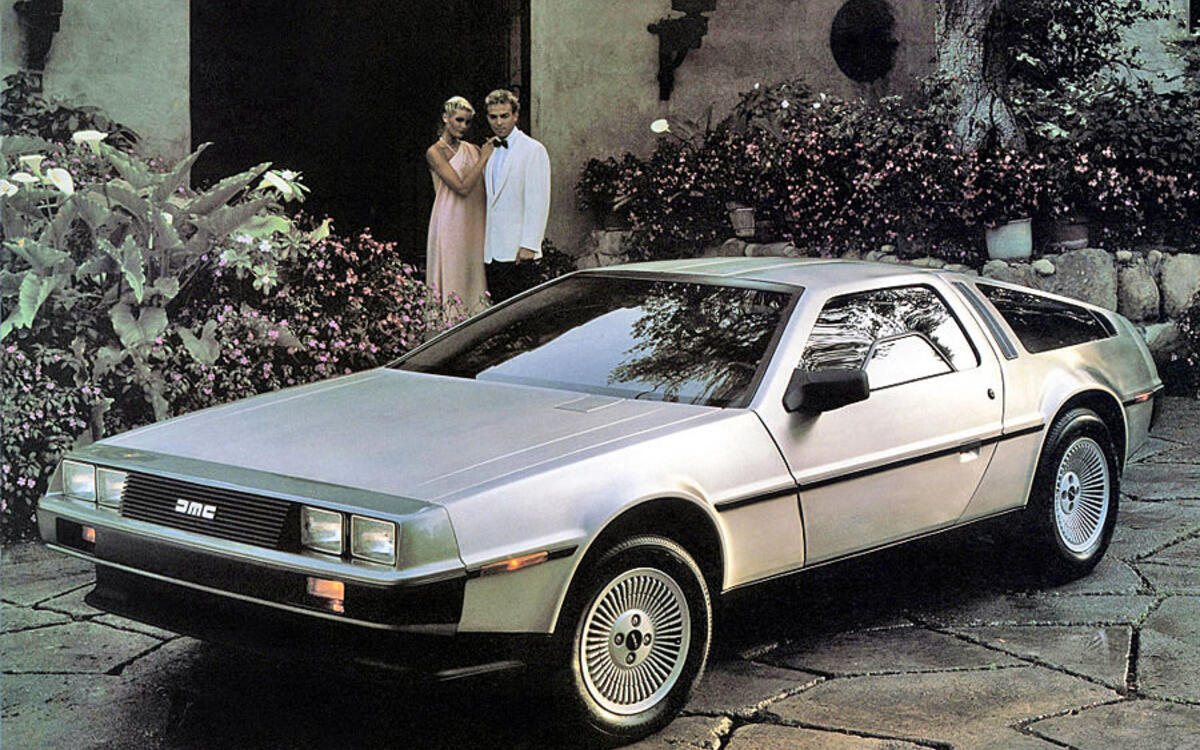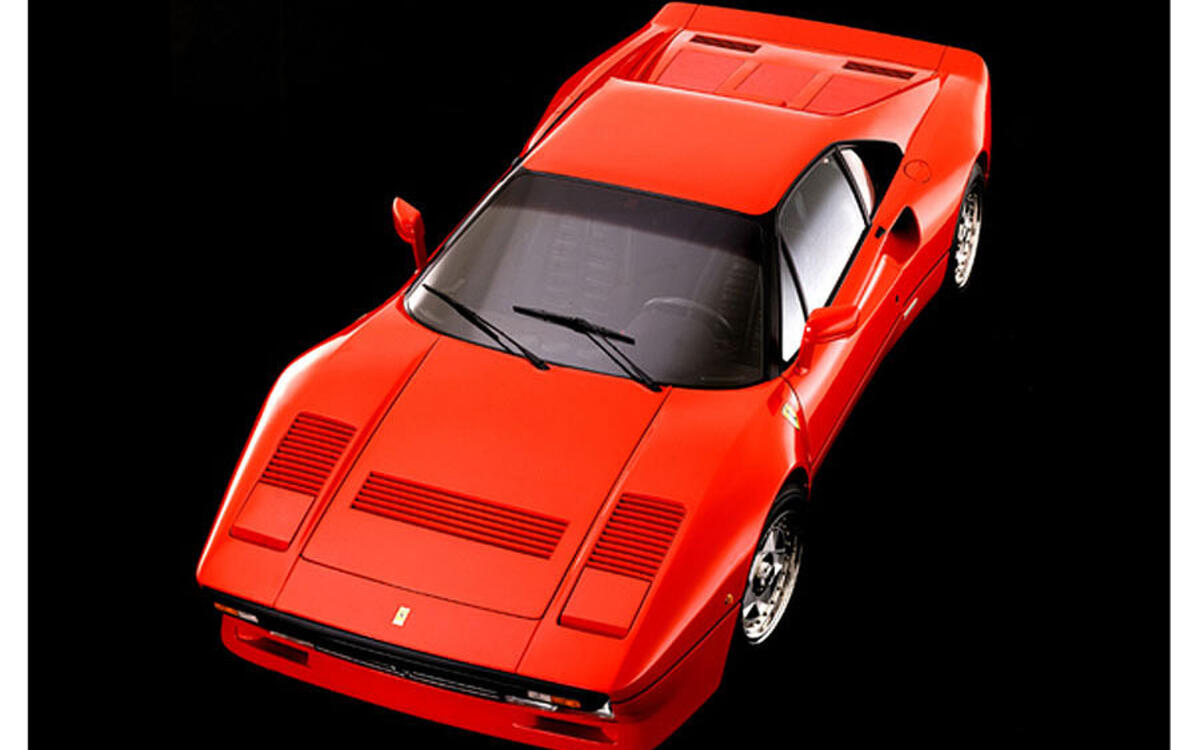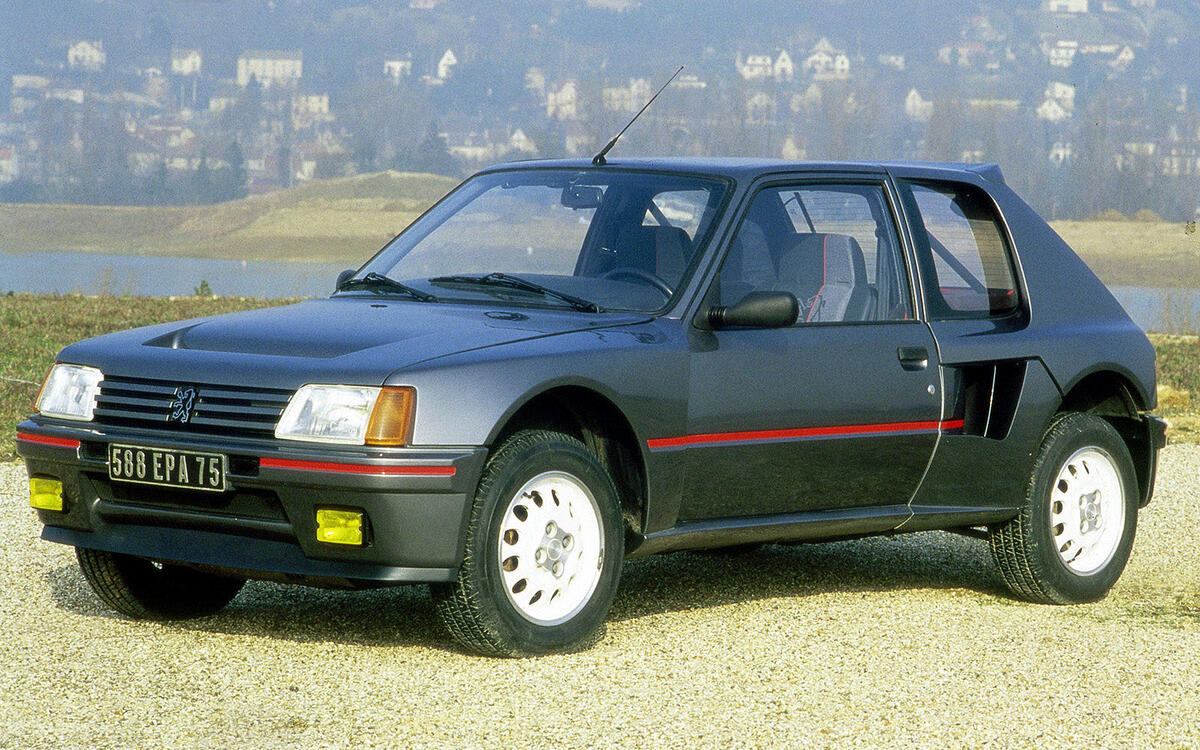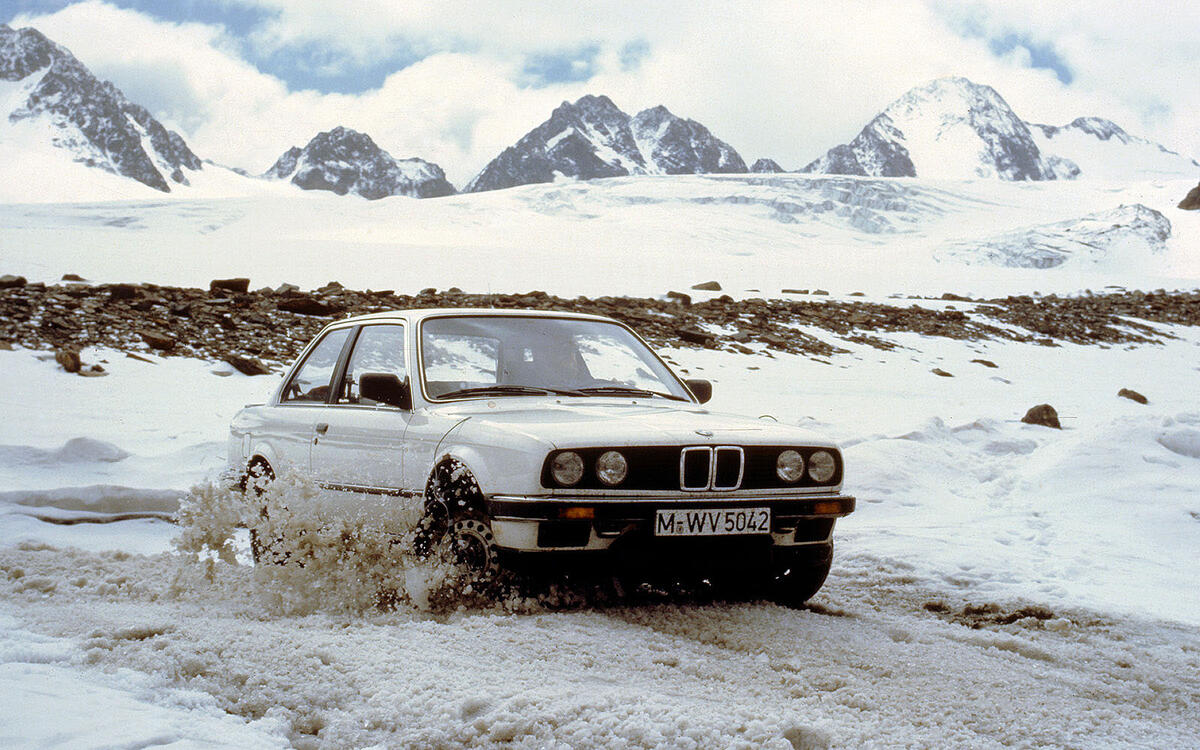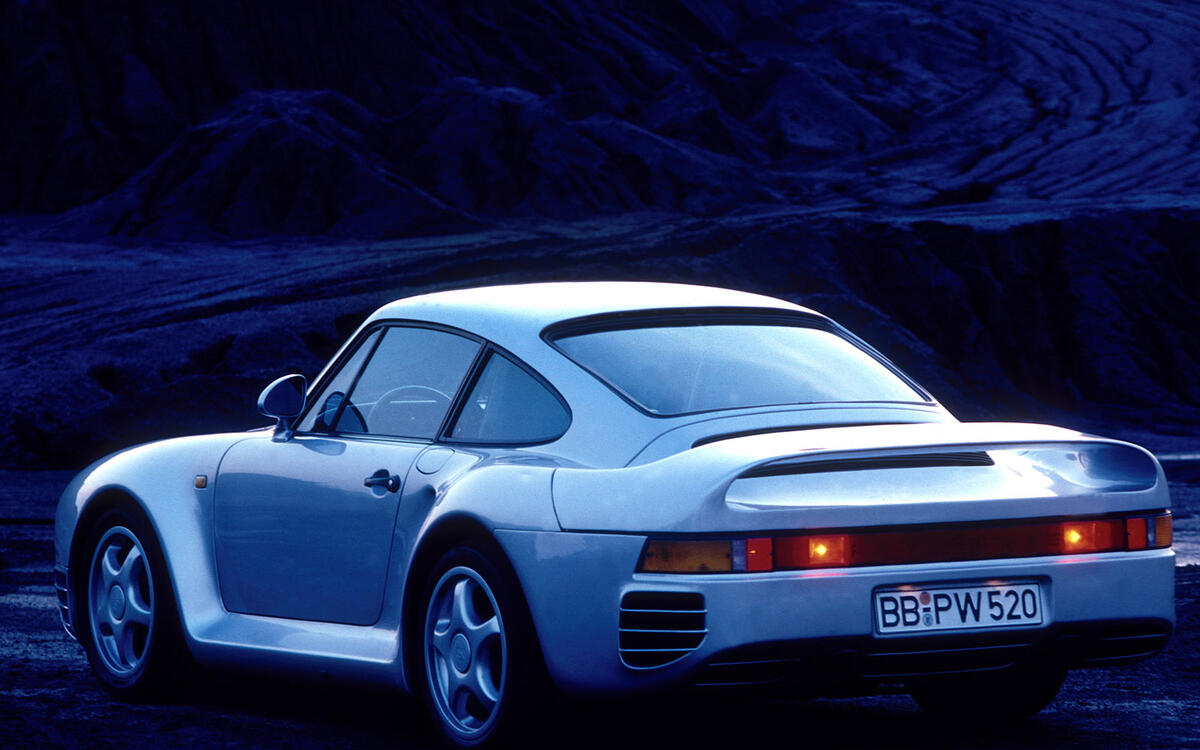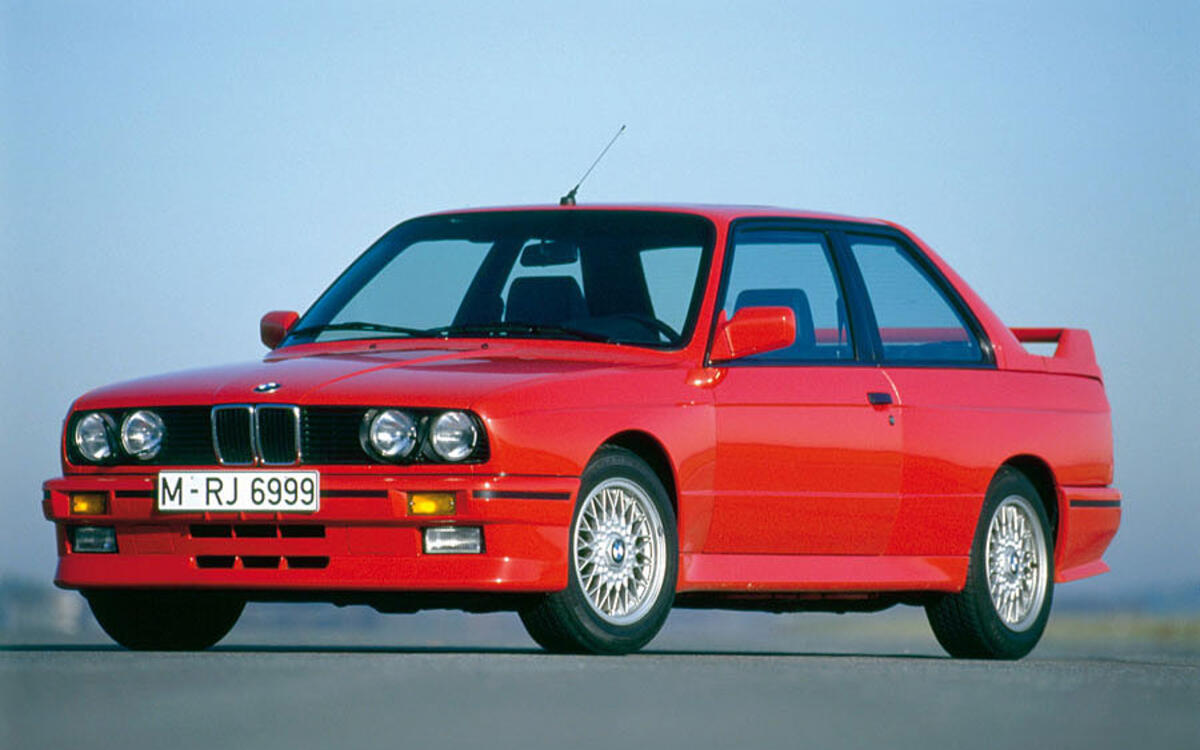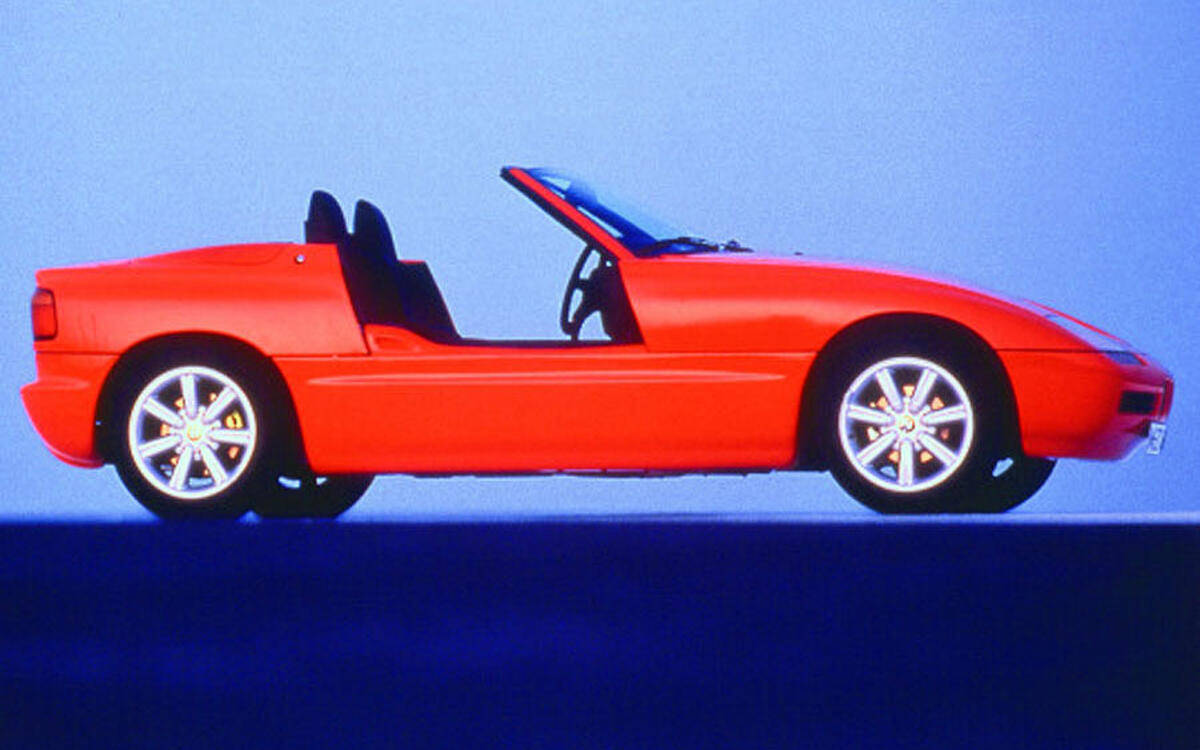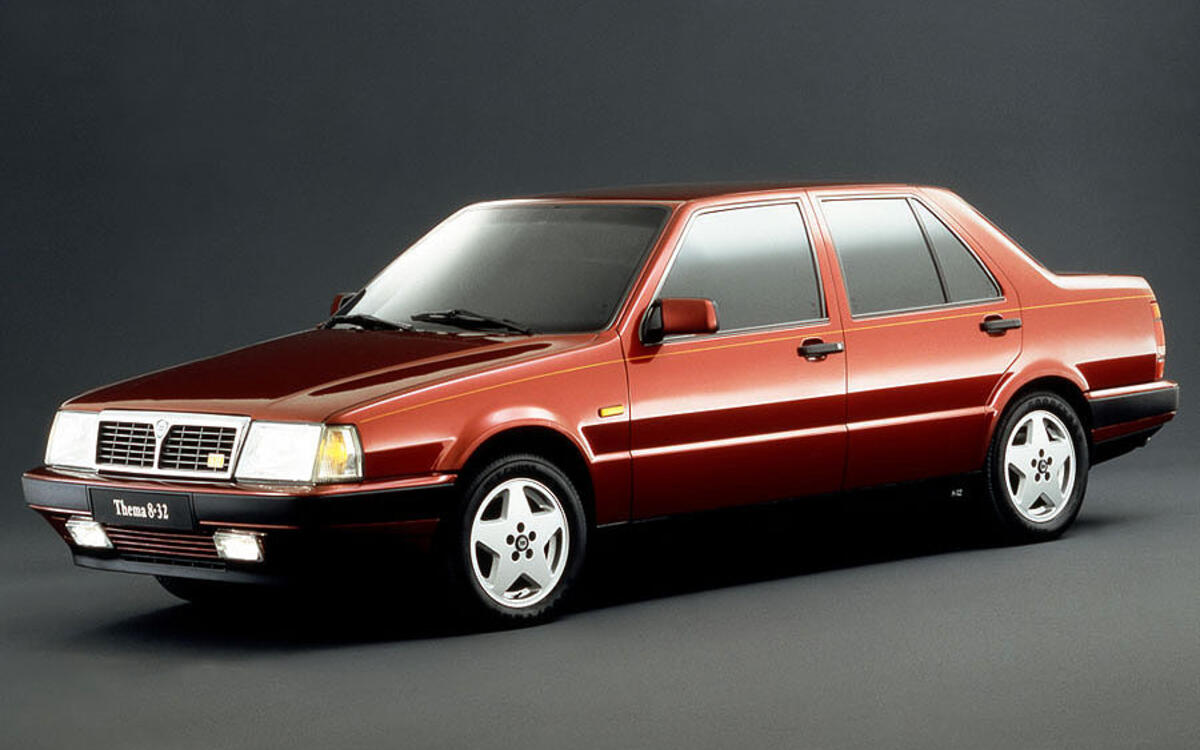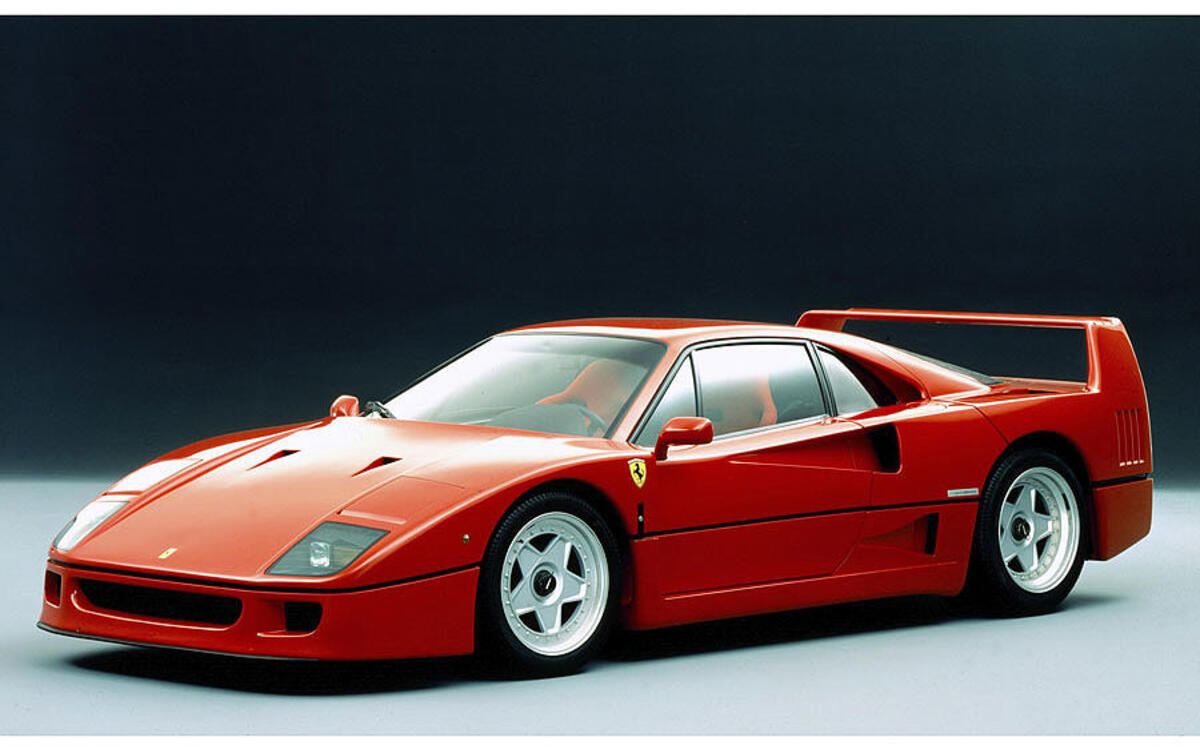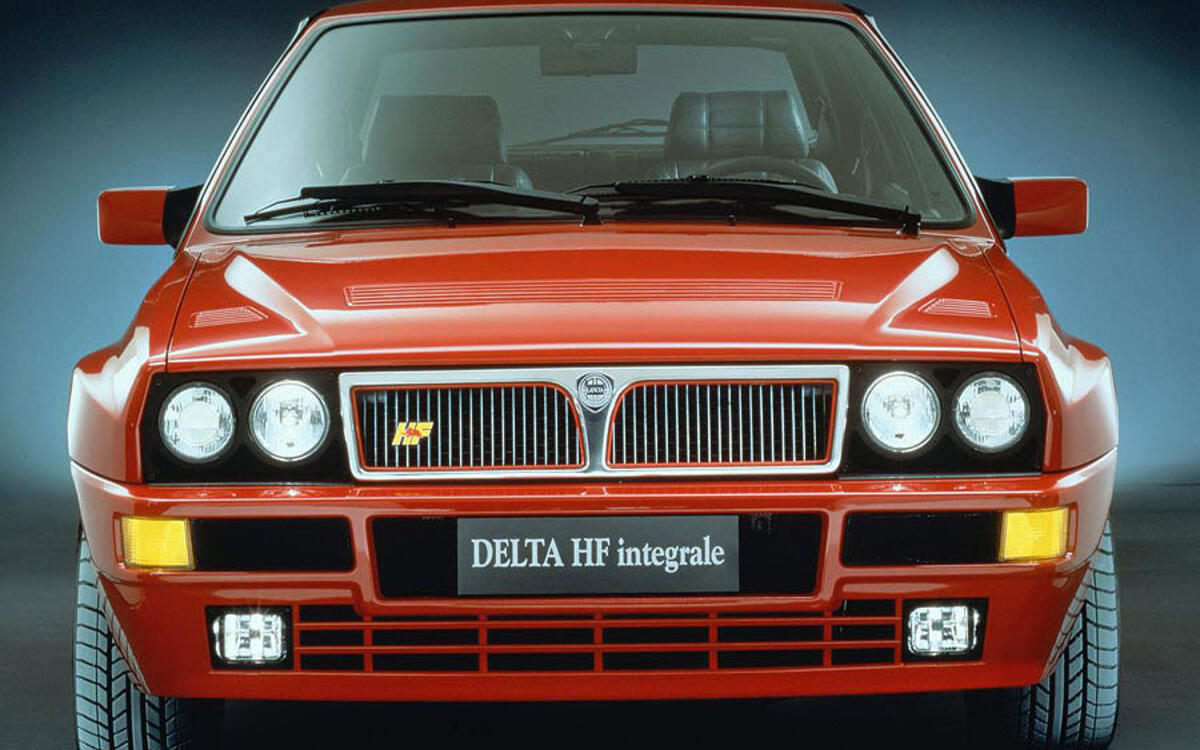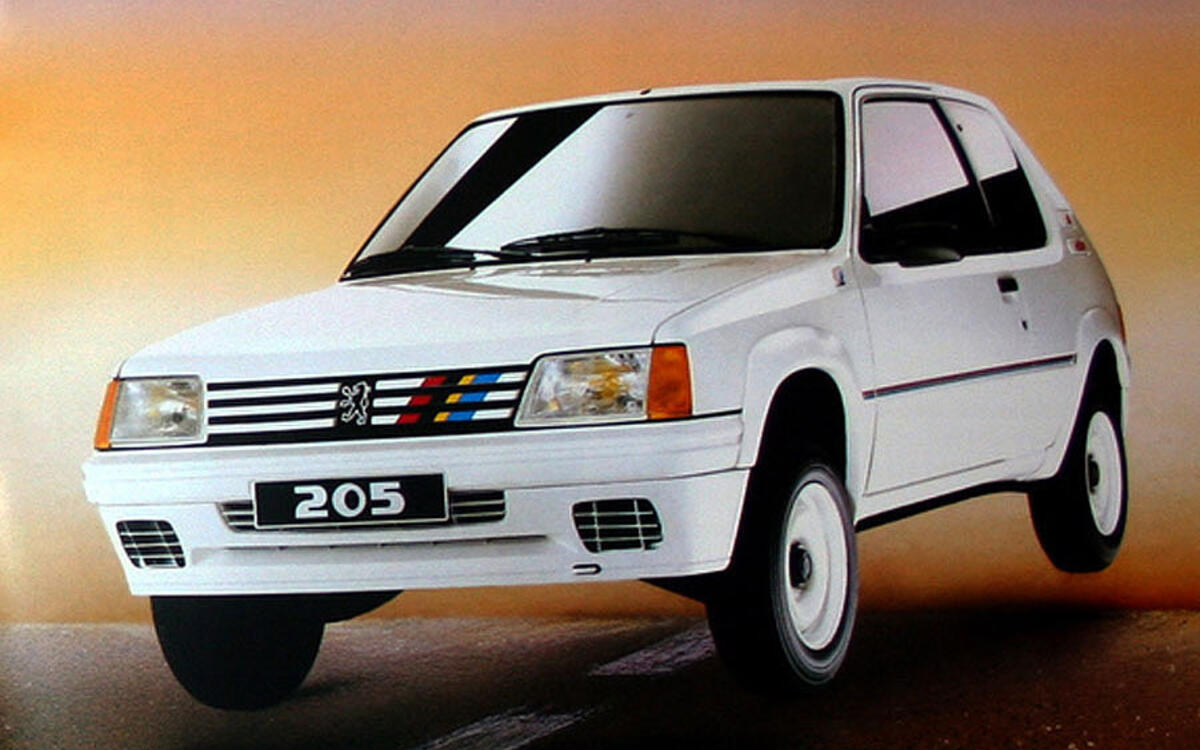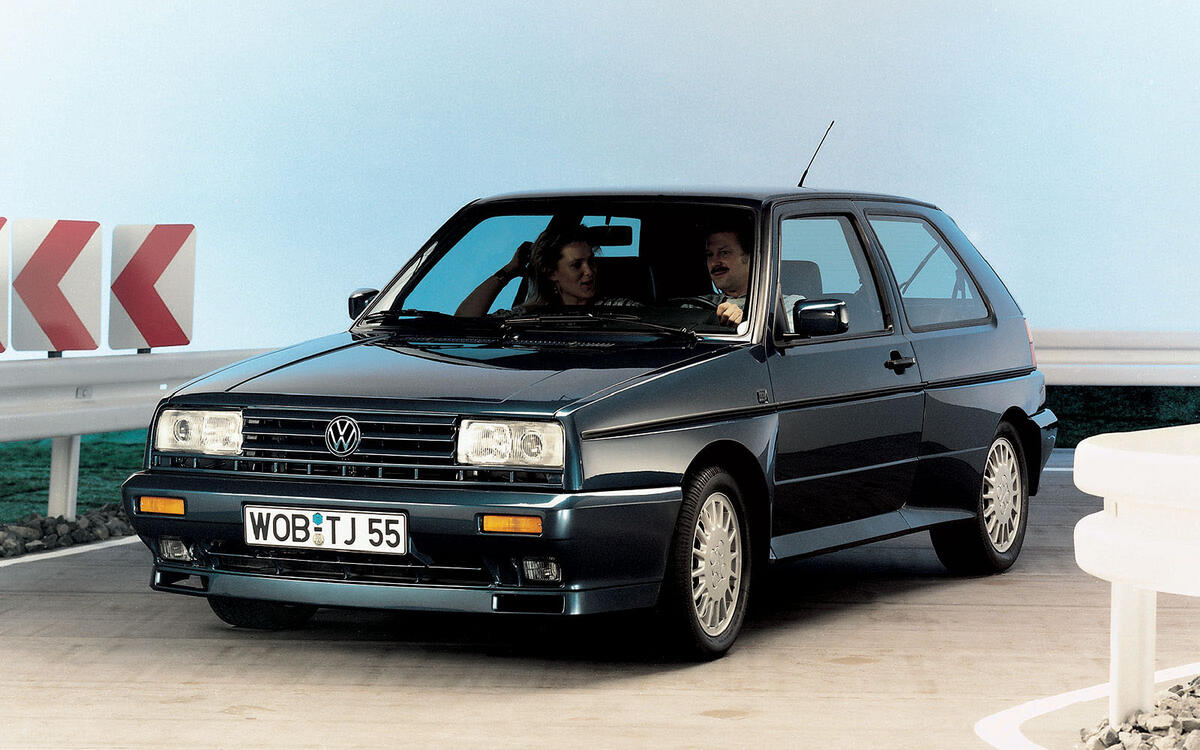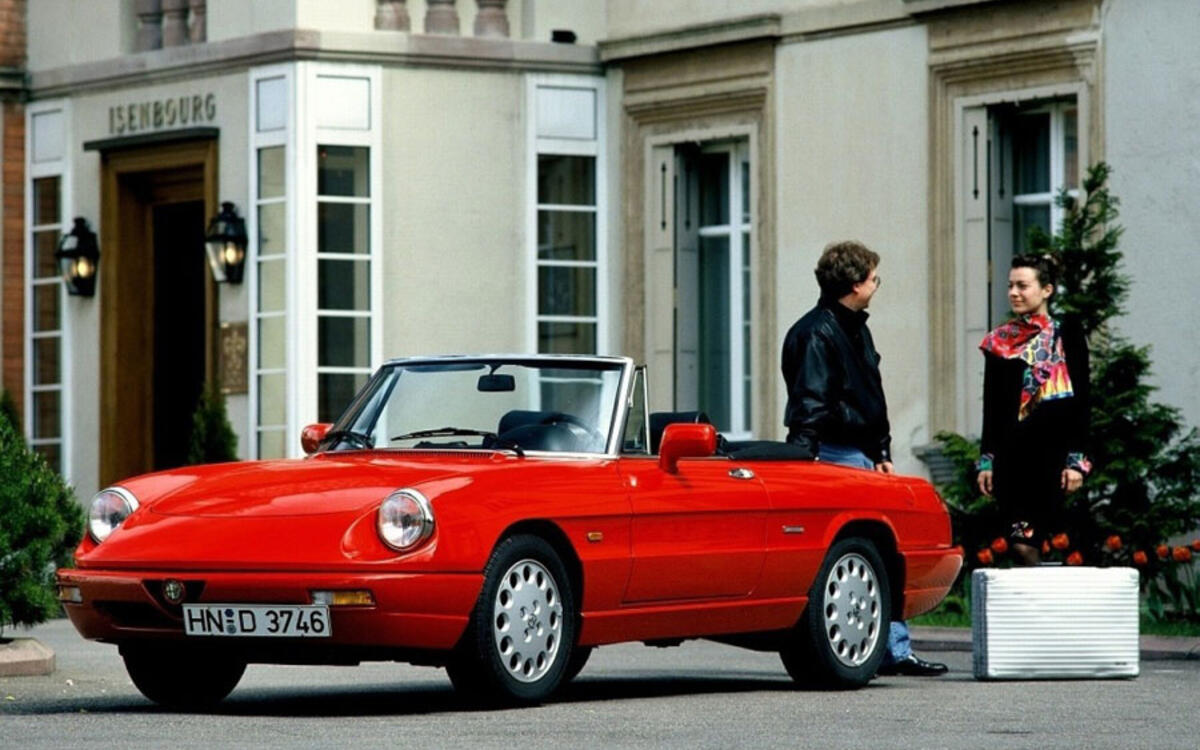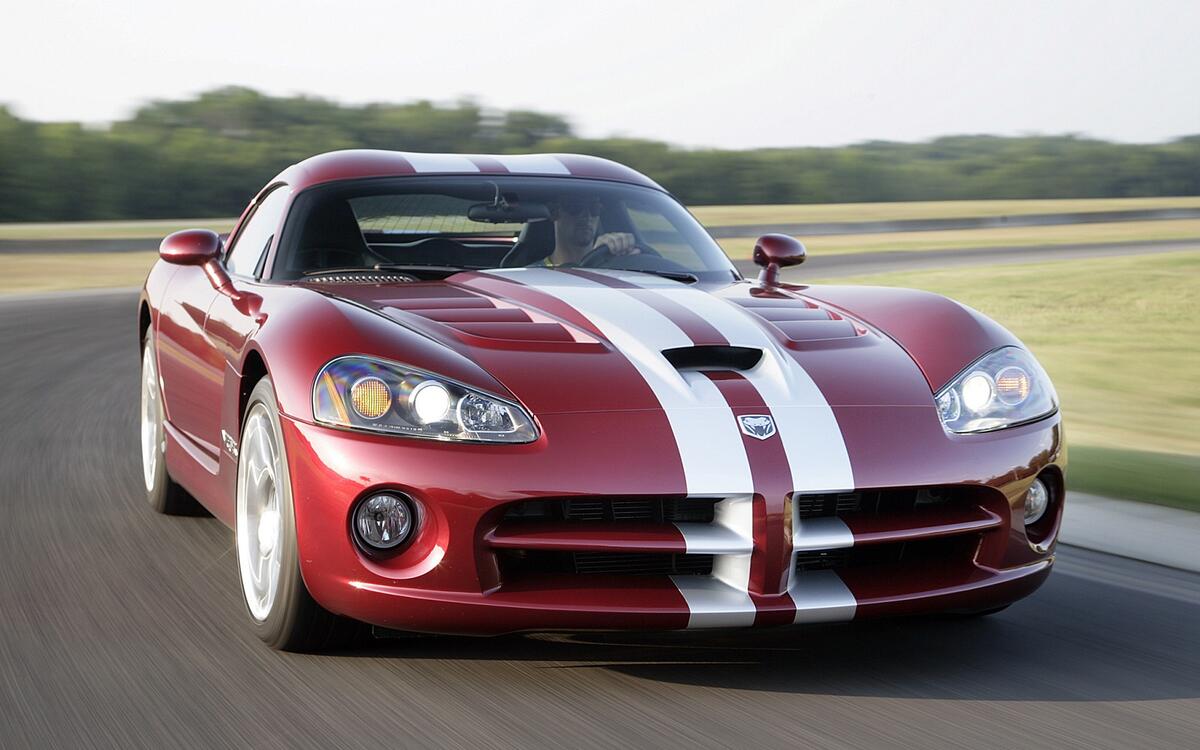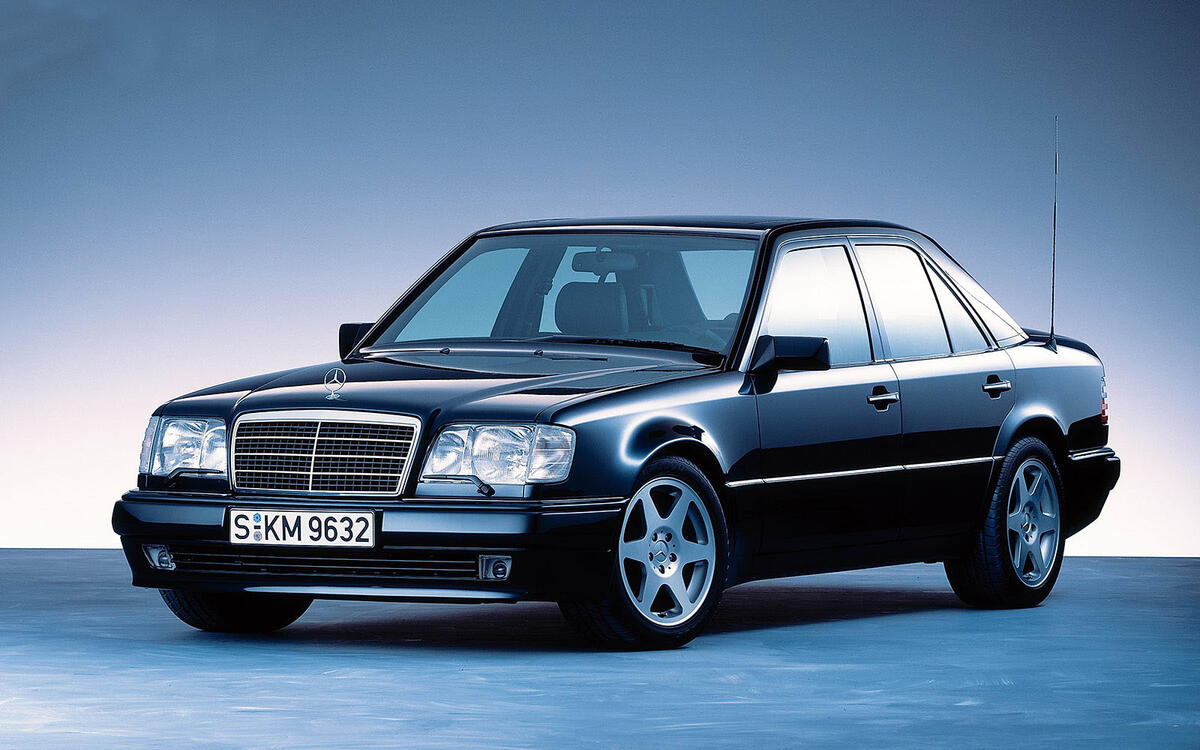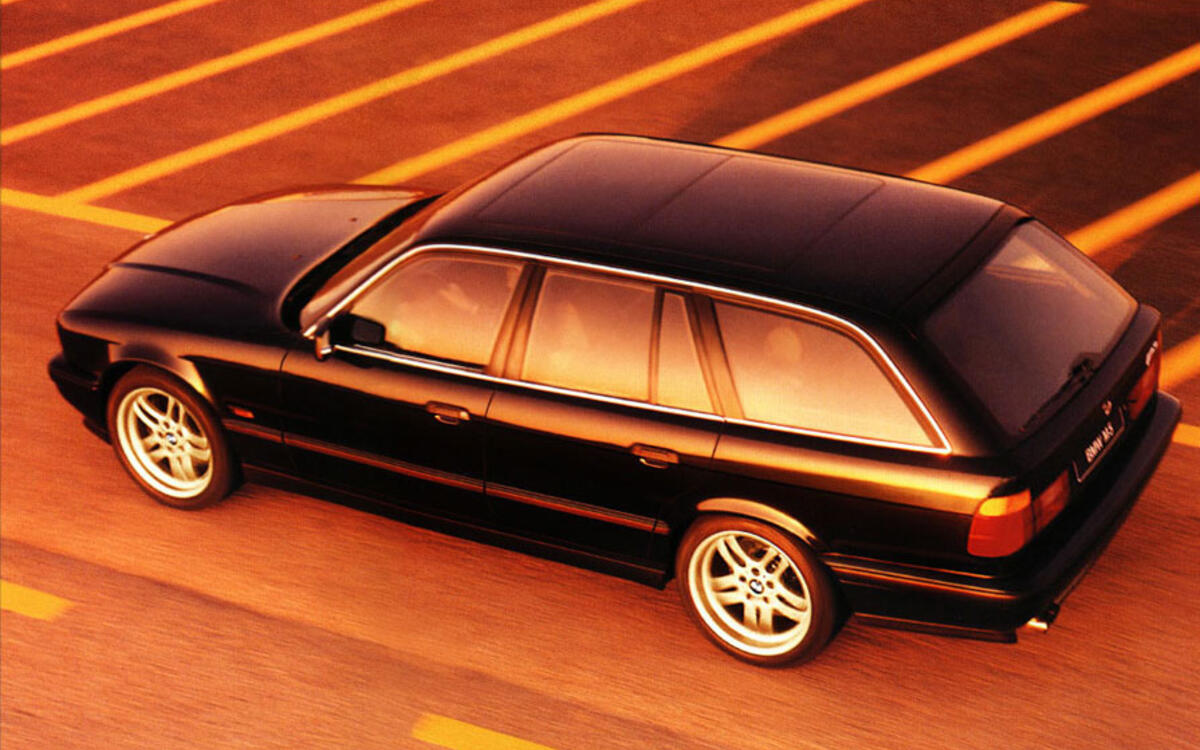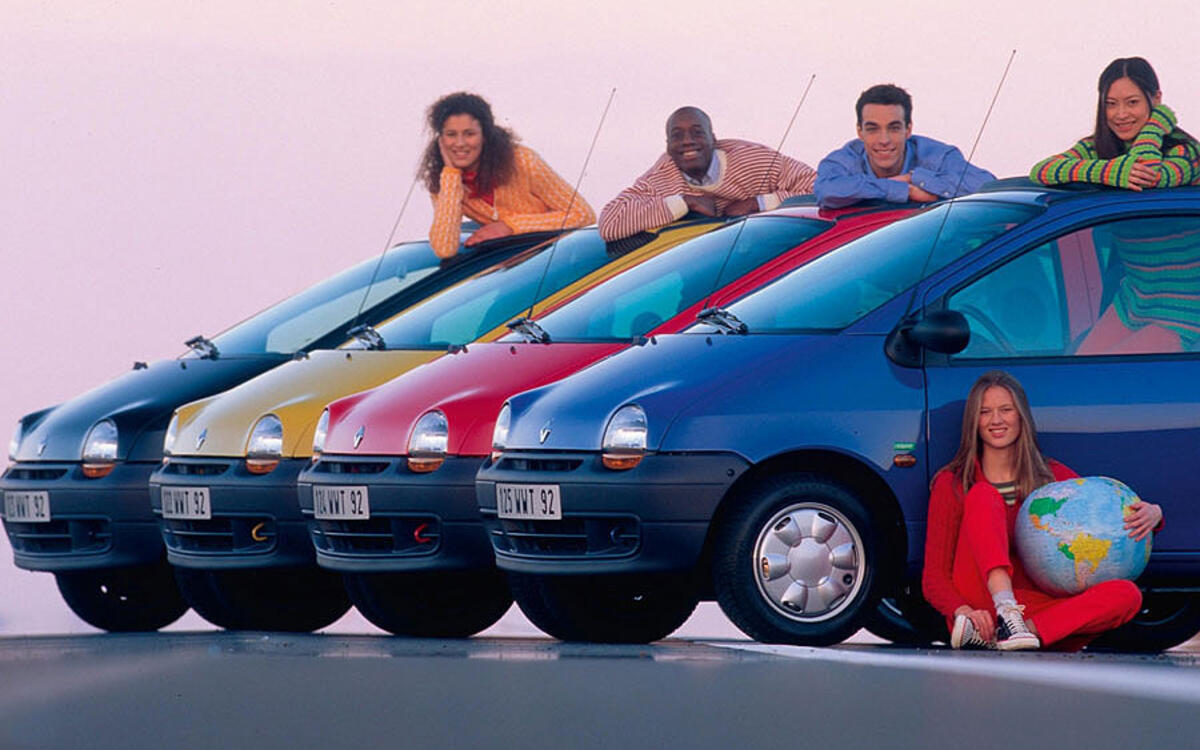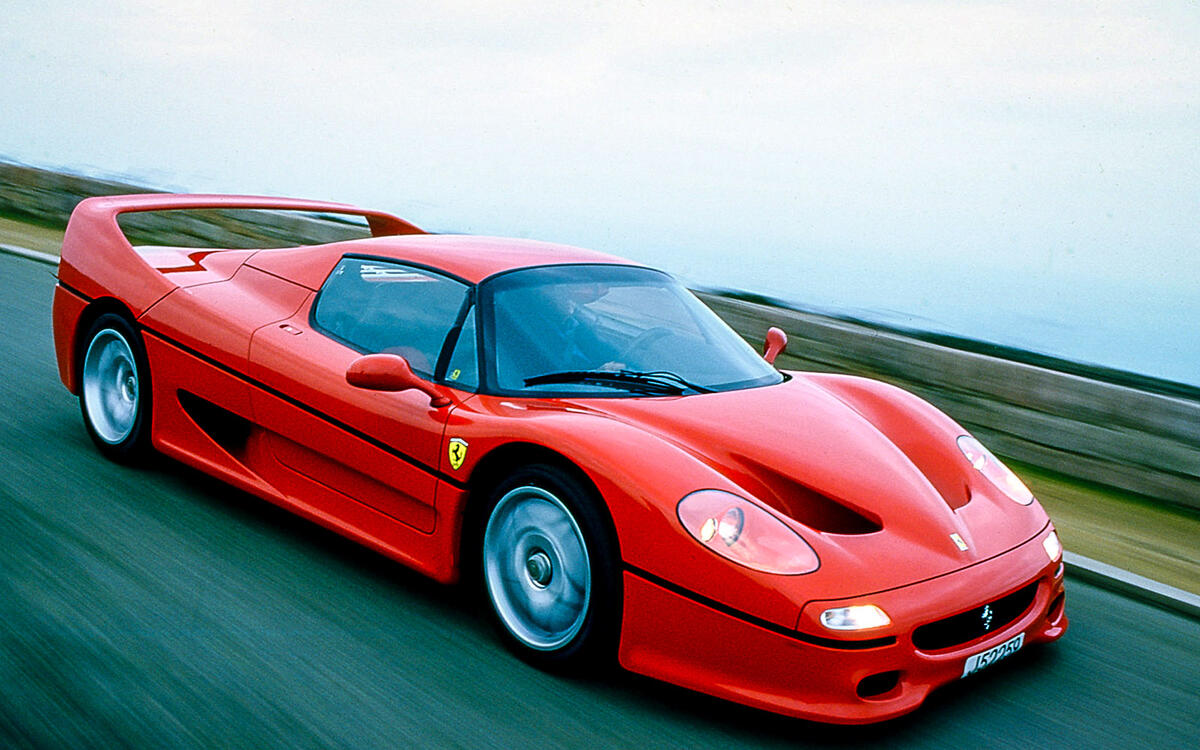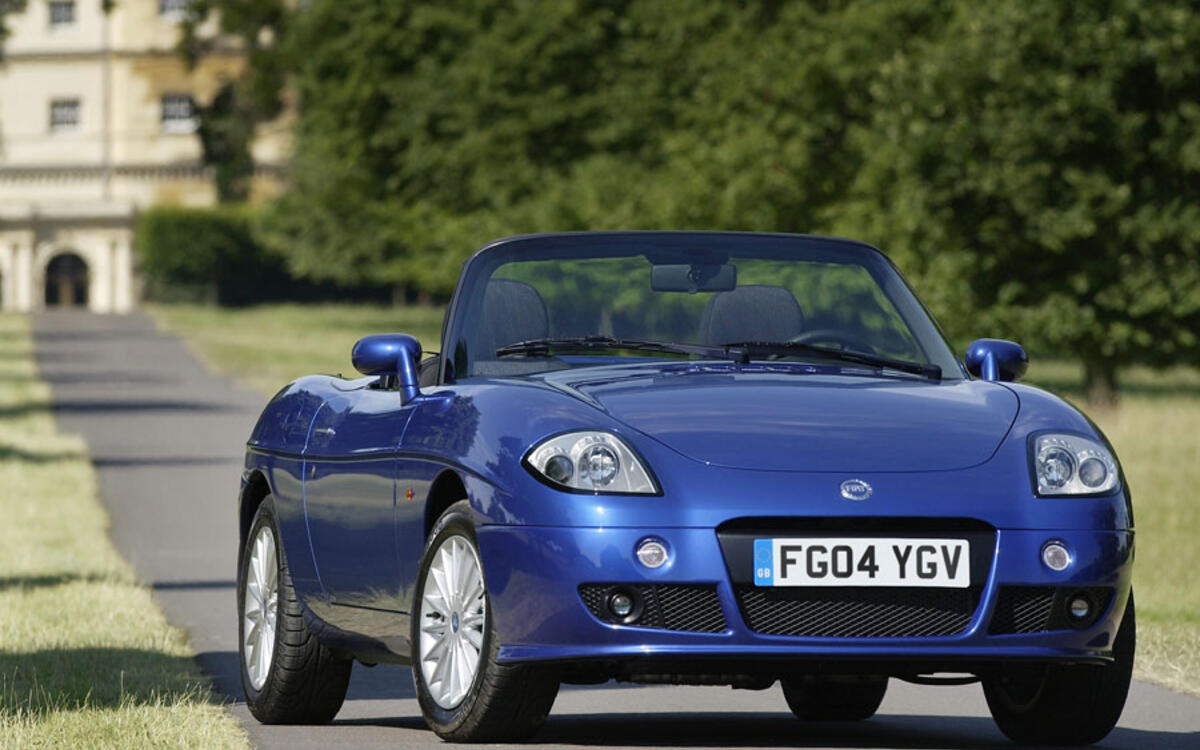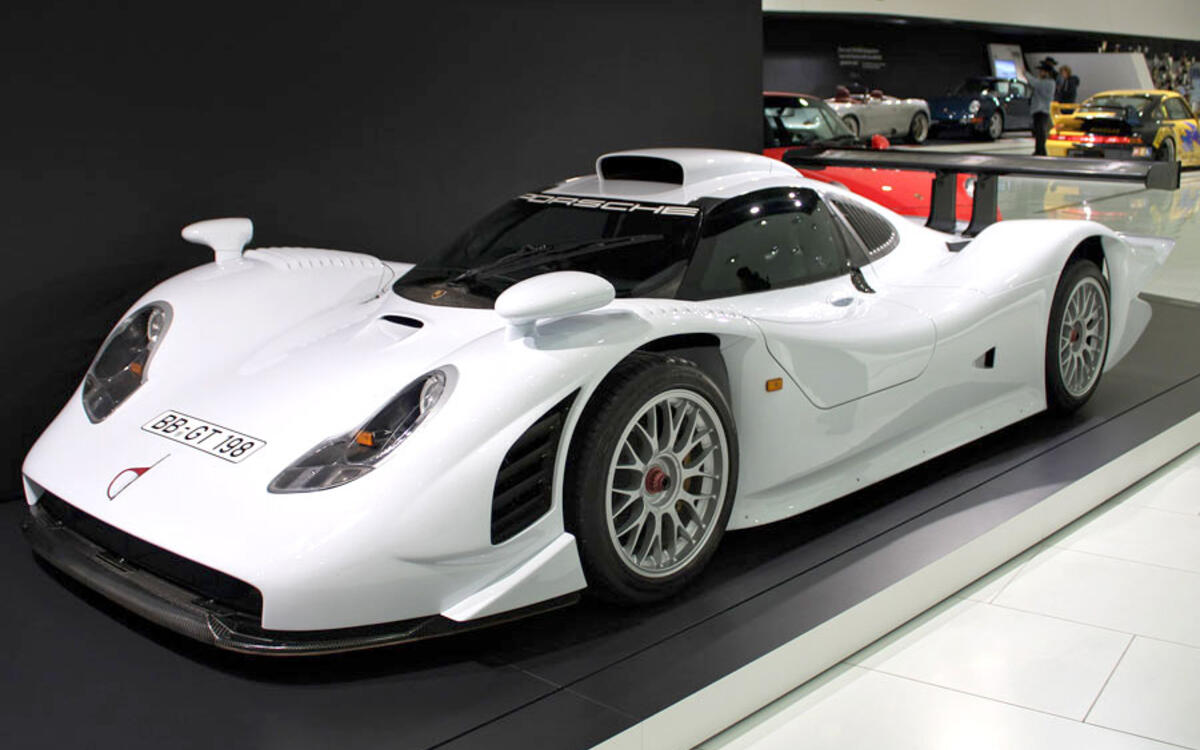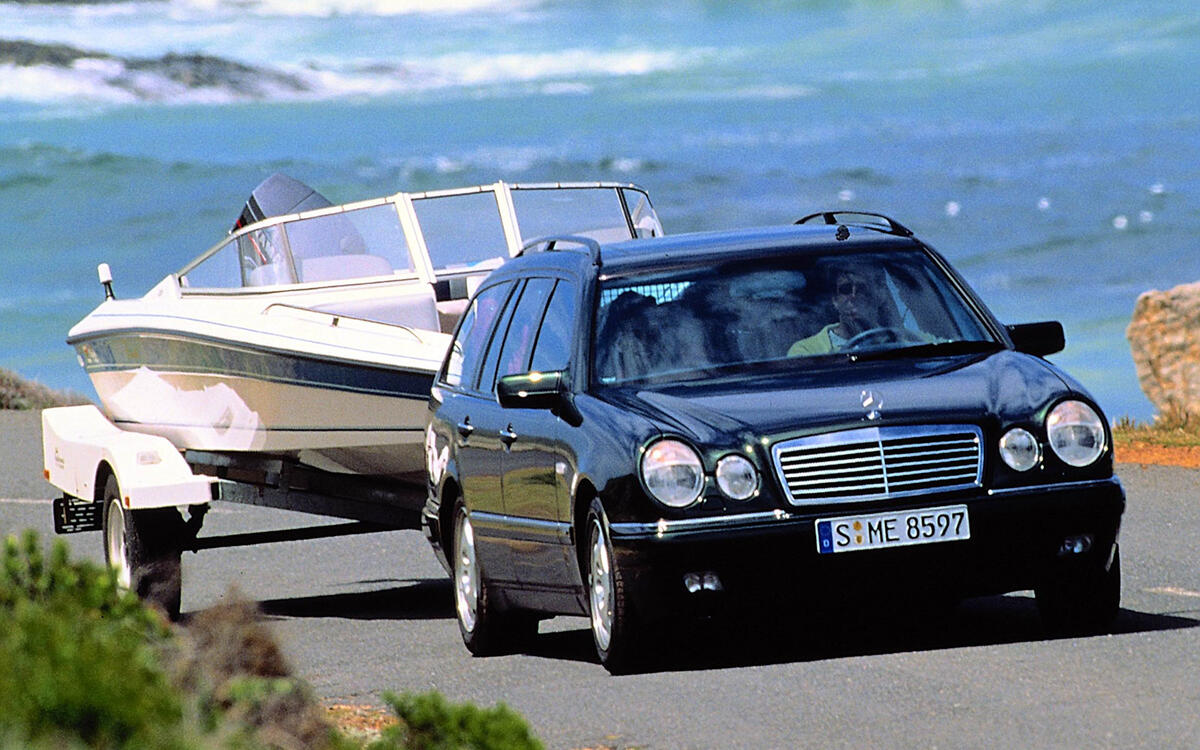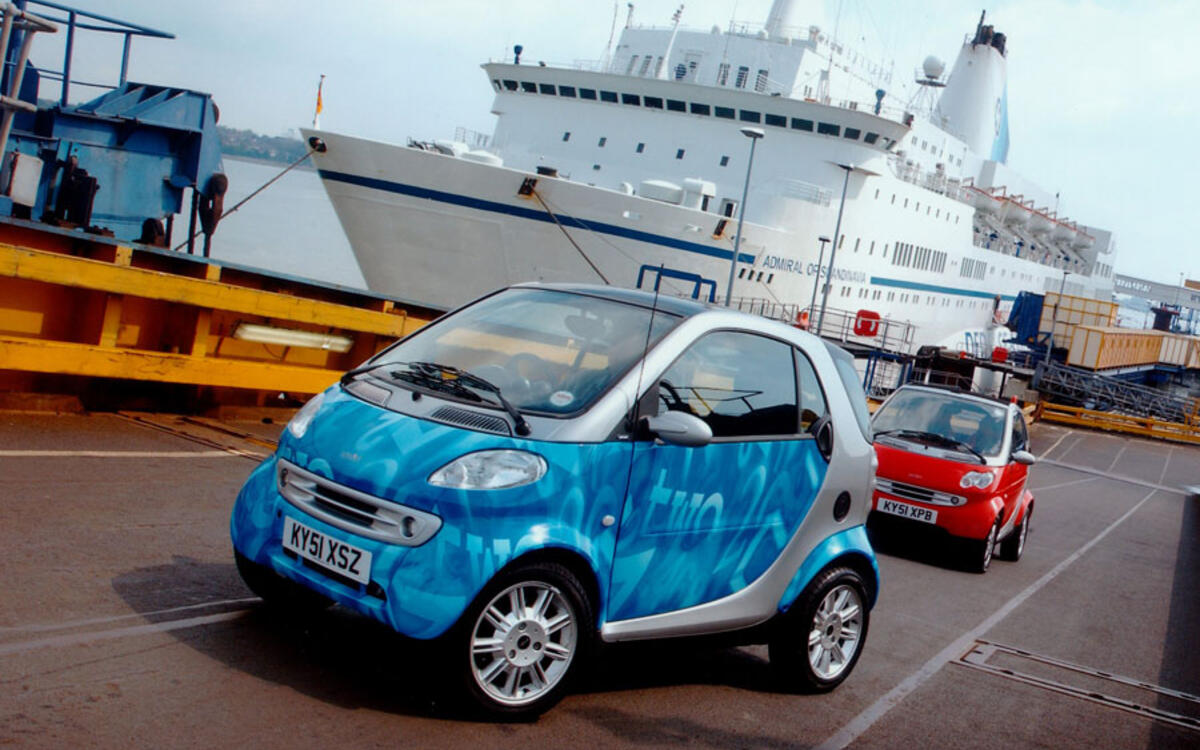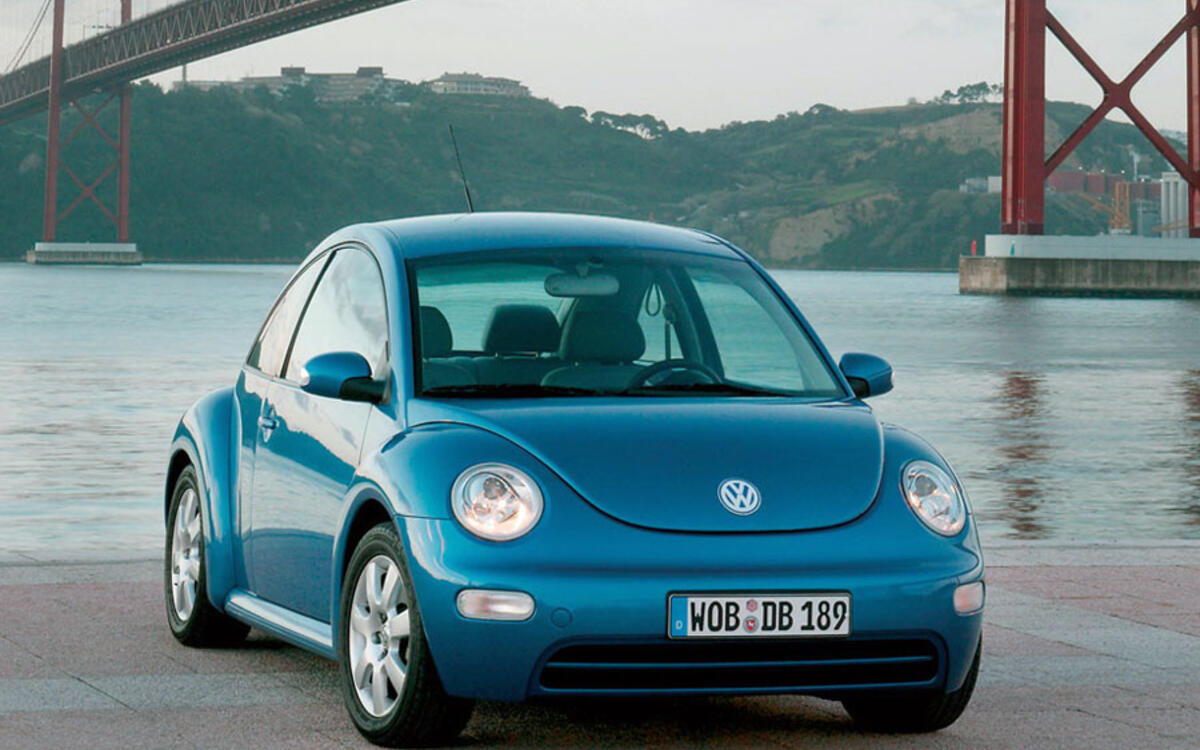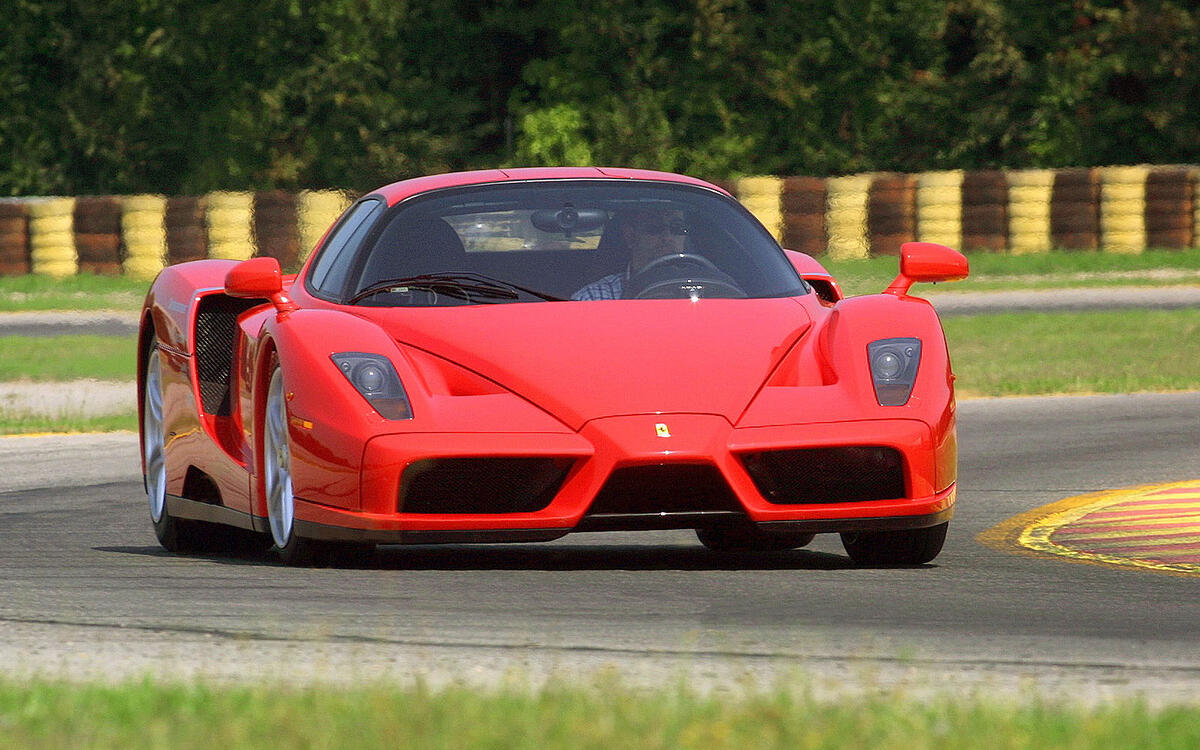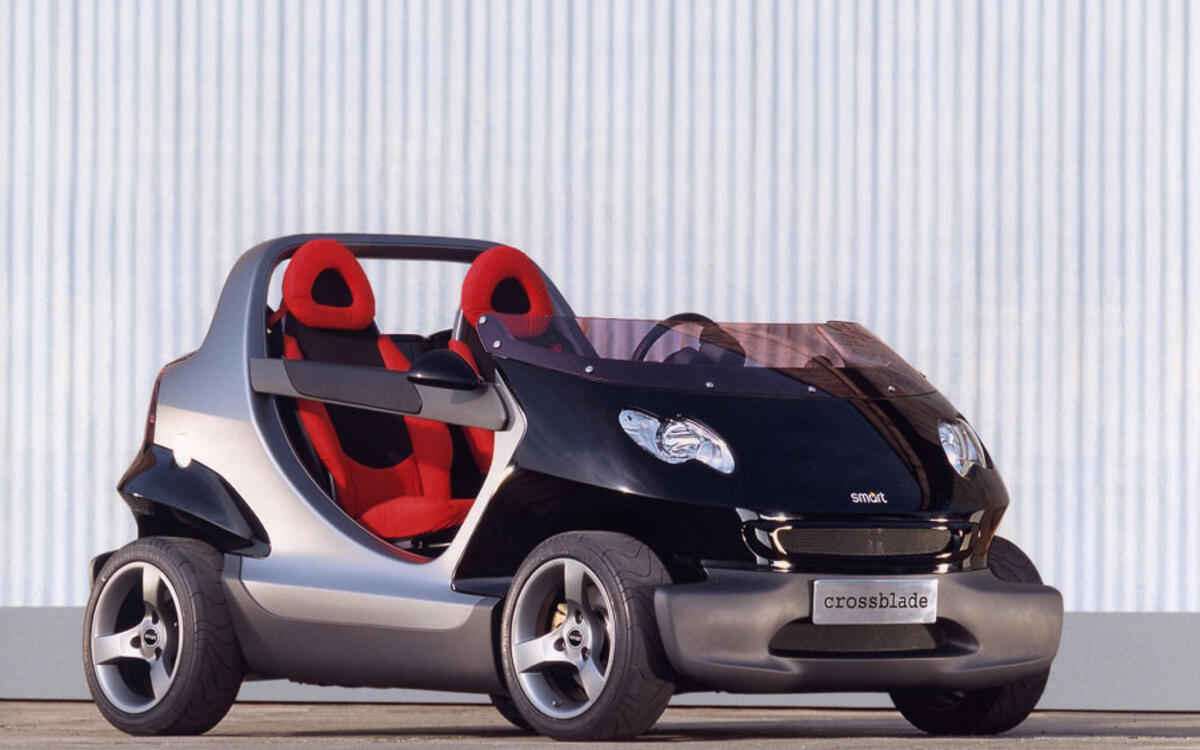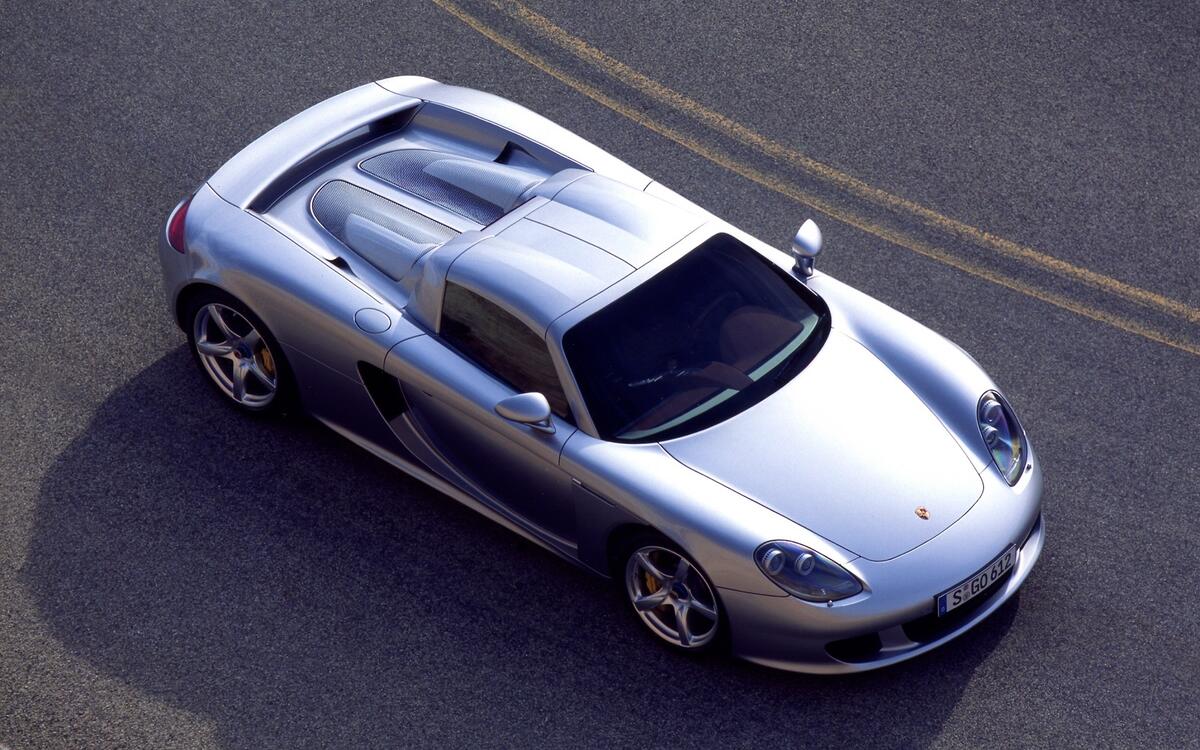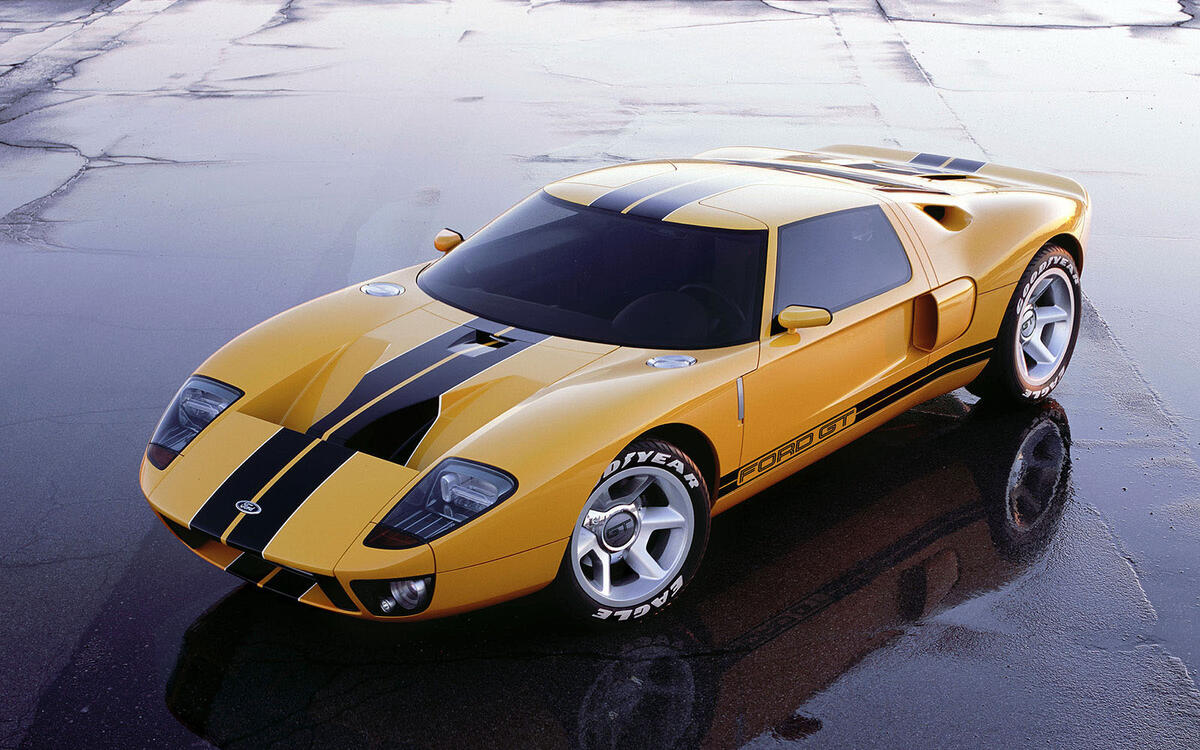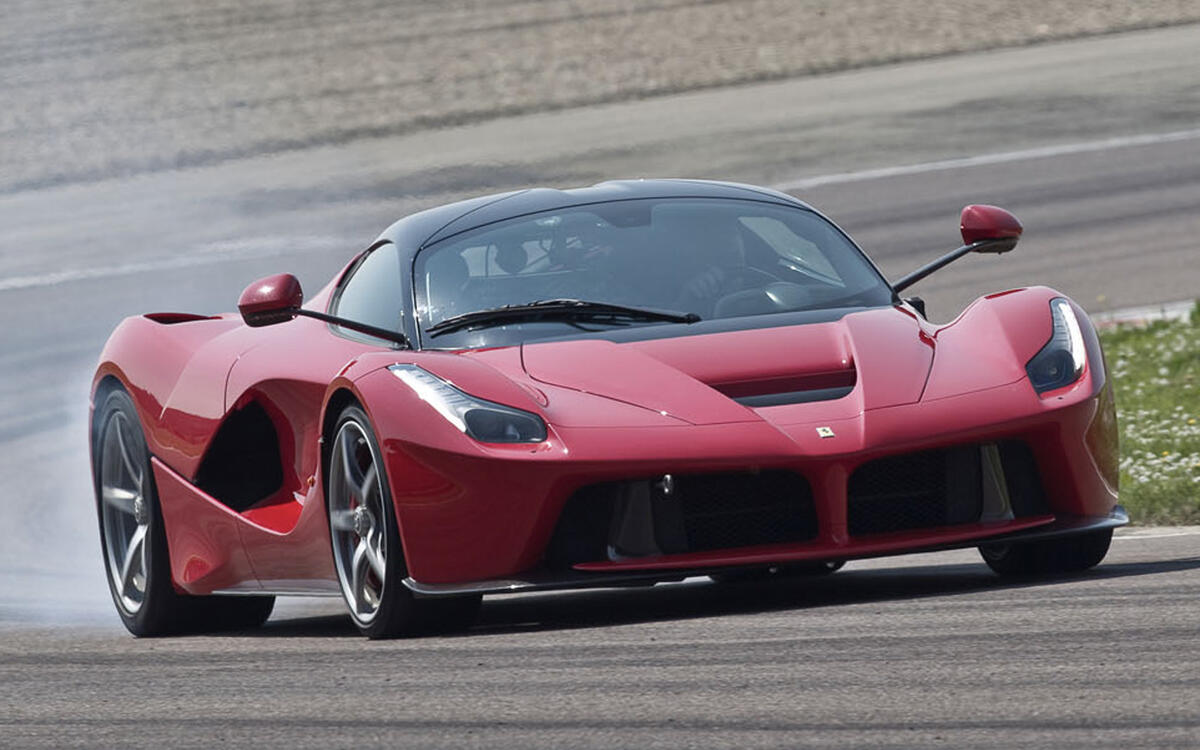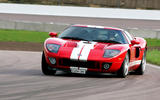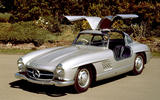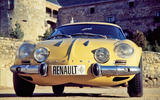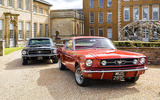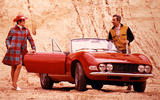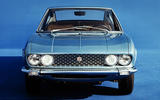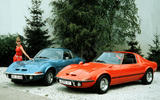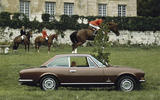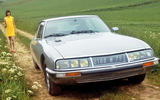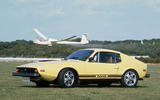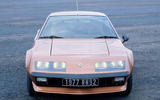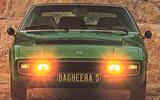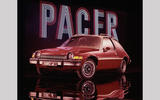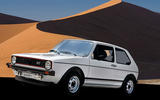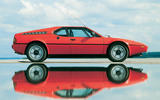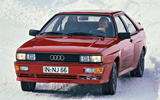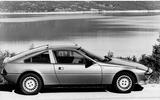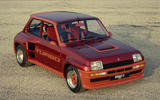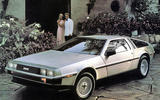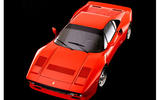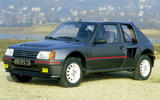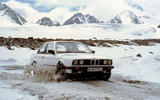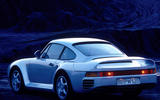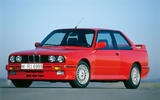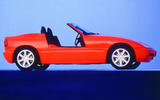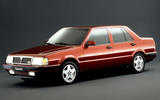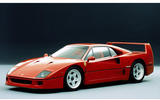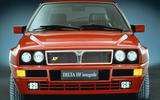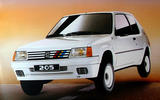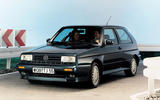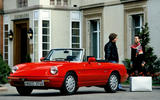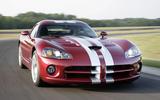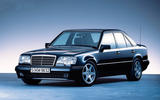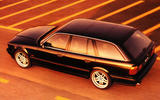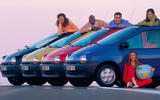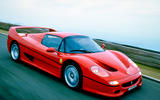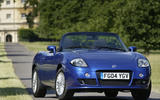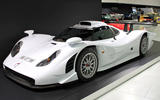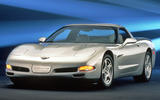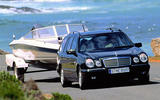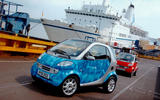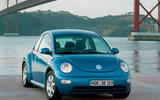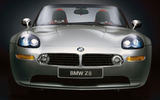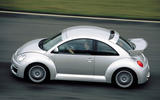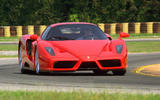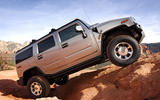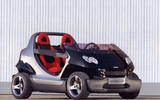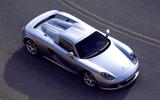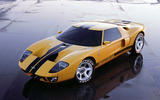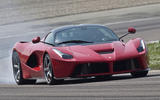 Slide of
Slide of
Despite being offered only in left-hand drive form, most of these cars are to be found in many right-hand drive countries…
The UK is unusual in Europe for driving on the left, but around the world there are plenty of other countries that do so – about a third of them in fact, many of which Britain colonised at one time. Right-hand drive countries include Australia, South Africa, Japan, India, plus other places in Africa and Asia.
Despite this, there's been no shortage of cars over the years that have been built only with left-hand drive – many of which have been officially sold in right-hand drive markets. Here are the best examples:
 Slide of
Slide of
Mercedes 300SL (1954)
The first Mercedes SL is now the most valuable of all, and although more were made than you might think (1400 gullwings and 1858 roadsters), its maker never got round to offering a right-hand drive model. Each 300SL came with a 3.0-litre straight-six with fuel injection – which incidentally wasn't the first car to feature such technology.
The first fuel-injected car was German – but it was the Goliath GP700 which arrived in 1952.
 Slide of
Slide of
Alpine A110 (1962)
There's an Alpine A110 in the price lists once more, but this is the original, from a time when Alpine was independent of Renault. However, Alpine has always used Renault mechanicals and in the case of the A110 that meant engines of 1.1-1.6 litres which provided plenty of go thanks to the lightweight and aerodynamic glassfibre body. Hugely successful in rallying, the A110 remained in production until 1977 by which point 7176 had been made.
Alpine has already beaten that figure with the new A110.
 Slide of
Slide of
Ford Mustang (1964)
It took until 2014 for a right-hand drive Mustang to be offered by Ford – a full 50 years after the original had gone on sale in the US. The Mustang quickly became an icon and huge numbers were exported to countries all around the globe, but for five generations Ford didn't produce the car in RHD form.
It finally relented with the Mk6 and it proved to be the right decision, with the car proving to be a smash hit outside the US.
 Slide of
Slide of
Fiat Dino Spider (1966)
When Ferrari decided to enter Formula 2 racing in the mid-1960s it had to come up with an engine with no more than six cylinders which would be fitted to at least 500 examples of a road car within a year. Ferrari didn't have that kind of sales volume or production capacity so it teamed up with Fiat, and the Dino was the result.
Designed and built by Pininfarina, the Dino Spider featured a 2.0-litre V6 engine initially, then a 2.4-litre unit from 1969.
 Slide of
Slide of
Fiat Dino coupé (1967)
If you're wondering why the Fiat Dino gets two entries – and why the coupé looks so different from the spider – it's because they were designed and built by two different companies. The fixed-head was styled and manufactured by Bertone but mechanically the two models were the same, with the open-topped car getting the bigger engine in 1969.
In all, 6043 Dino coupés were built.
 Slide of
Slide of
Opel GT (1968)
Launched two years before the more mainstream and higher-profile Manta, the Opel GT was a strange machine in many ways. It featured no externally accessible boot, its headlamps rotated to illuminate, and although it was a sports car it was offered with a 1.1-litre engine – although most buyers opted for the 1.9-litre alternative.
There were plenty of buyers too, thanks to exports to the US: over 100,000 Opel GTs were made between 1968 and 1973.
 Slide of
Slide of
Peugeot 504 coupé & cabriolet (1969)
The Peugeot 504 saloon and estate were worthy enough, but it was the handsome Pininfarina-designed (and built) coupé and cabriolet that were the really desirable editions. Built between 1969 and 1983, over 34,000 were made, about a quarter of which were the open-topped edition.
None left the factory with right-hand drive but a handful were converted once they'd hit the UK.
 Slide of
Slide of
Citroën SM (1970)
Although Citroën made almost 13,000 SMs between 1970 and 1975, all of them featured the steering wheel on the left – although some were converted later on for the UK and Australian markets.
One of the boldest production designs ever seen, courtesy of Robert Opron (born 1932), the SM featured hydropneumatic suspension, a 2.7 (later 3.0) V6 engine, self-levelling headlights that turned with the wheels plus variable-assist power steering.
 Slide of
Slide of
Saab Sonett III (1970)
Saab developed the Sonett for sale in the US and it didn't sell the car in any right-hand drive markets. But that hasn't stopped enthusiasts of these quirky sports cars from importing one of the 8368 examples produced between 1970 and 1975.
Initially a 1.5-litre Ford V4 engine was fitted, but as US emissions regulations started to bite a 1.7-litre unit was fitted, rated at the same 65bhp as its predecessor – to give a top speed of 103mph.
 Slide of
Slide of
Alpine A310 (1971)
Sold alongside the Alpine A110, the A310 was pitched against the Porsche 911 so it was a more grown-up sports car in terms of size and price, yet it was still powered by nothing more than a 1.6-litre four-cylinder Renault engine.
This would be superseded by a 2664cc V6 in 1976 which would be fitted until the end of production in 1984, by which time 9276 A310s had been built.
 Slide of
Slide of
Matra-Simca Bagheera (1973)
Launched in 1973, it would be another four years before the Bagheera was officially imported to the UK, where it was sold for just two years – although production continued until 1980.
Designed as a budget sports car, the Bagheera featured three-abreast seating and a 1294cc engine when launched, later increased to a 1442cc unit. Within 18 months of its arrival 10,000 had been sold and by the time production ceased, a healthy 47,802 had been made.
 Slide of
Slide of
AMC Pacer (1975)
Designed to take on the Ford Pinto in North America, the AMC Pacer was officially brought into the UK – although very few cars were sold there. All Pacers left the factory with the steering wheel on the left, but once they'd landed in the UK they were poorly converted by an officially approved specialist that destroyed the already mediocre dynamics.
 Slide of
Slide of
VW Golf GTi Mk1 (1976)
Yes we know the original Golf GTi came with right-hand drive – but only after several years of campaigning by the UK importer. VW was convinced that the GTi would only ever be a niche seller, but only after large numbers of GTis had been personally imported did the suits in Wolfsburg acknowledge that there was a market for a RHD GTi.
Three years after the car had first gone on sale in Germany those cars finally started to be built, and the UK became one of the GTI’s biggest markets overnight.
 Slide of
Slide of
BMW M1 (1978)
The first road car to come from BMW's Motorsport division, and surely the most special, the M1 was also the first mid-engined car to come from the brand. The M1 was created for BMW to compete in Group 5 racing, but the car's gestation period was so protracted that by the time it was ready the series had been scrapped.
In the end just 399 road-going M1s were made, about a dozen of which were sold new in the UK.
 Slide of
Slide of
Audi Quattro (1980)
As Volkswagen had been with the Golf GTi, Audi was slow to offer a right-hand drive Quattro. Although left-hand drive cars were available from 1980, it took another two years for right-hand drive examples to be built.
It proved to be a good move for Audi though because as well as a load of left-hand drive examples personally imported in the early days, more than 2700 Quattros were sold in the UK through Audi dealers by the time production was wound up in 1991.
 Slide of
Slide of
Matra Murena (1980)
Buoyed by the success of its Bagheera, Matra came up with a sequel. Like its predecessor, the Murena featured three-abreast seating and a mid-mounted engine; this time there was a choice of 1.6- or 2.2-litre four-cylinder units giving up to 140bhp and 130mph. Production ran from 1980 until 1984, with 10,680 Murenas made in all.
 Slide of
Slide of
Renault 5 Turbo (1980)
Renault has a history of creating oddball cars and few are as intriguing as this one. Created to take on the Lancia Stratos in the World Rally Championship, the mid-engined Renault 5 Turbo appeared in 1980, with a 1397cc powerplant rated at just 160bhp in road-going form, while the racers got 207bhp.
Renault revealed a Turbo 2 in 1983 with fewer unique parts and more production bits in a bid to cut costs. Almost 5000 Renault 5 Turbos were made.
 Slide of
Slide of
De Lorean DMC-12 (1981)
One or two prototype RHD De Loreans were made and a handful were converted from left-hand drive, but there was never a production model built with RHD. Which is rather bizarre considering the De Lorean was made in Northern Ireland which drives on the left. It was developed for the US market though and that's where De Lorean focused its efforts – for the year that the DMC-12 was sold before the company went bust.
 Slide of
Slide of
Ferrari 288 GTO (1984)
The first in a line of Ferrari hypercars, just 273 examples of the 288 GTO were built, including one pre-production prototype. Each one was powered by a twin-turbo 2.9-litre mid-mounted V8, painted red (apart from one black example for the Sultan of Brunei) and they all had the steering wheel on the left.
 Slide of
Slide of
Peugeot 205 T16 (1984)
Plenty of Group B rally cars were produced with right-hand drive but not this one; the most successful car of its type in the last two years of Group B rallying. The 205 Turbo 16 won the 1985 and 1986 Constructors' and Drivers' titles even though it was a real handful to drive. As with most Group B cars, the 205 T16 shared very little with its road-going counterpart in terms of its construction and mechanical layout.
In the case of the latter there was a mid-mounted turbocharged 16-valve 1.8-litre engine that drove all four wheels.
 Slide of
Slide of
BMW 325iX (1985)
BMW has been building four-wheel drives for a lot longer than you might think. This was the company's first car with drive to each corner; the Europe-only 325iX. Offered in saloon and estate forms, the E30-based 325iX featured permanent four-wheel drive (with a 37:63% split front:rear) and a 192bhp 2.5-litre petrol engine.
A handful made it to the UK but survivors must surely now be measured in single figures.
 Slide of
Slide of
Porsche 959 (1985)
When it was unveiled in 1985 this was the most technically advanced car that the world had ever seen, with its electronically controlled four-wheel drive transmission, sequentially twin-turbocharged multi-valve flat-six engine plus a bodyshell made of lightweight composites.
Just 337 were made initially, then in the early 1990s Porsche made another eight from spare parts.
 Slide of
Slide of
BMW M3 E30 (1986)
When BMW decided to go Group A racing with its E30 3 Series, the M3 was the result. Powered by a mere four cylinders, 5000 examples of this original (and best) M3 had to be built to comply with homologation rules.
By the time production stopped in 1991 BMW had made almost 18,000 of them including 786 convertibles – plus an array of Evo and special editions.
 Slide of
Slide of
BMW Z1 (1986)
The Z1 wasn’t meant to be a production car; it was built as a test rig for the ingenious Z-axle rear suspension of the E36 3 Series. Scoop pics revealed that BMW had come up with a corking design and it quickly became clear that there was a market for the two-seater sportster.
Although most of the oily bits were taken from the contemporary E30 325i, a bespoke bodyshell and chassis led to a high unit cost. Despite this, 8000 BMW Z1s were made and they're now very collectible.
 Slide of
Slide of
Lancia Thema 8.32 (1986)
The Thema 8.32 made no sense at all and that's what made it so incredibly intriguing and alluring. The 3.2-litre V8 engine in the nose was closely related to the one seen in the contemporary Ferrari 308 and Mondial, but it was reworked to be better suited to a front-engined, front-wheel drive saloon.
With 215bhp on tap the Thema 8.32 was a bit of animal to drive, but barely any quicker than the turbocharged 2.0-litre alternative – which was much cheaper.
 Slide of
Slide of
Ferrari F40 (1987)
Ferrari knew that it could sell every F40 it made, without having to faff about with tooling for right-hand drive. That's despite the fact that F40s would be sold in RHD markets all over the globe, and it wasn't even that exclusive with more than 1300 made; Ferrari had initially planned to sell 400 of them.
The 478bhp twin-turbo F40 was claimed to be the first production car capable of 200mph, although 199mph was the most that anybody got out of the car independently.
 Slide of
Slide of
Lancia Integrale (1987)
The UK was a big market for Lancia. Indeed, the Integrale was the last model that the company sold in decent numbers before a steady decline towards oblivion. Developed from the Delta HF 4WD, the Integrale came with blistered wheelarches, a turbocharged 2.0-litre twin-cam engine and permanent four-wheel drive.
It thrashed all comers in the World Rally Championship with ever more lairy iterations introduced until the Integrale was no more, in 1994.
 Slide of
Slide of
Peugeot 205 Rallye (1988)
The UK market did get a right-hand drive 205 Rallye, but the really good edition was reserved for the French. Whereas the RHD car was just a limited edition with stickers, the Euro model was a lightweight homologation special with a 103bhp twin-carb 1294cc engine and a kerb weight of just 794kg.
Stripped of all comforts including soundproofing, it was coarse but a riot to drive.
 Slide of
Slide of
Alfa Romeo SZ & RZ (1989)
Completely bonkers but utterly fascinating, the Alfa Romeo SZ was first shown in concept form as the ES30. It was so mad that everyone assumed it would never be built – but the SZ went on sale soon after, built by Zagato and based on Alfa Romeo 75 running gear with a 3.0-litre V6 engine fitted to give a top speed of over 150mph, partly thanks to the lightweight composite bodywork.
Nicknamed 'Il Mostro' (The Monster), 1036 SZs were made as well as 284 open-topped versions called the RZ.
 Slide of
Slide of
Volkswagen Golf Rallye (1989)
Volkswagen built an array of Golf Mk2 and Mk3 models that gained a cult following in right-hand drive countries – but which came only with left-hand drive. Arguably the highlight of these was the Golf Rallye which was based on the Mk2 and came with a supercharged 1.8-litre engine, blistered wheelarches and four-wheel drive.
With 160bhp on tap the car was quick and a hoot to drive, and while 5000 were made, none featured right-hand drive.
 Slide of
Slide of
Alfa Romeo Spider S4 (1990)
Although there were aftermarket conversions available, all of these later Alfa Romeo Spiders left the factory with left-hand drive. This final iteration of the Spider was structurally the same as the Series 2 that made its debut in 1970 – that in turn was an evolution of the original 1966 'Duetto'.
All of these Series 4s came with a 2.0-litre twin-cam engine now with electronic fuel injection and variable valve timing for extra zip.
 Slide of
Slide of
Dodge Viper (1991)
Chrysler and its subsidiaries have cooked up some pretty crazy cars over the years, but few are as bonkers as this V10-powered leviathan. Created as a modern-day Cobra, the Viper was first shown as a concept in 1989, and the response was so positive that it made its debut in production form two years later.
Initially a 400bhp 8.0-litre V10 was fitted but by the time the third-generation Viper arrived in 2003 this had grown to a monstrous 8.3 litres and 500bhp. The newest cars (from 2013) packed a 640bhp punch.
 Slide of
Slide of
Mercedes 500E (1991)
The Mercedes W124 was a big seller in right-hand drive markets for Mercedes, but the most desirable production model of all was never offered with the steering wheel on the right – the 500E (later the E500) which was developed in conjunction with Porsche.
The W124 was developed to accommodate a straight-six but not a V8, but Porsche did a fantastic job which resulted in a 5.0-litre V8-powered slingshot that looked little different from a regular W124 saloon. Production ran to 10,479 examples.
 Slide of
Slide of
BMW M5 Touring (1992)
While its rivals Audi and Mercedes have had no trouble shifting ultra-fast estates, BMW buyers seem to prefer saloons which is why so few load-lugging M cars have been built.
The first M5 Touring was based on the E34 (the second-generation M5) and although 11,364 saloons were made, just 891 estates were built, all with the 3.8-litre six-cylinder engine of the facelifted M5 that arrived in 1991.
 Slide of
Slide of
Renault Twingo (1992)
Renault developed the original Twingo for mainland Europe and that's where it focused its efforts when it came to sales – but this brilliantly designed city car was so well packaged and fun that quite a few found their way over the Channel, to the UK.
Renault learned from its mistake and sold the second- and third-generation Twingos in the UK, but after the original model they weren't nearly as well loved.
 Slide of
Slide of
Ferrari F50 (1995)
The Ferrari F50 was a very different animal from its F40 predecessor, with its naturally aspirated 4.7-litre V12, targa-top configuration and much greater exclusivity with just 349 examples made. Once again there was no right-hand drive option although the Sultan of Brunei did commission at least one car to be converted.
 Slide of
Slide of
Fiat Barchetta (1995)
The Fiat Barchetta was sold officially in the UK and Japan with the former market proving surprisingly popular. Based on a Fiat Punto platform which brought a 1.8-litre petrol engine, the Barchetta's front wheels were driven via a five-speed manual gearbox.
Some cars were converted independently but all cars left the factory in LHD form.
 Slide of
Slide of
Porsche 911 GT1 (1996)
It was hardly worth Porsche tooling up for both left- and right-hand drive production of its 911 GT1, as just 25 examples were made, to comply with GT1 homologation rules. Power came from a twin-turbo 3.2-litre flat-six that gave a top speed of around 190mph which wasn't all that impressive – but the ability to sprint from 0-100mph in little more than seven seconds was rather more enticing.
 Slide of
Slide of
Chevrolet Corvette (1998)
The original Corvette (the C1) was launched in 1953, and since then General Motors has attempted official imports to Europe on several occasions. The C5 came here from 1997 and attempts were made to sell the C6 and C7 – but they came only in LHD form.
It seems the new mid-engined Corvette C8 will be the first Corvette to be built in right-hand drive form.
 Slide of
Slide of
Mercedes E-Class 4Matic (1998)
Mercedes launched its 4Matic four-wheel drive system in the W124 E-Class in 1986. That car came to the UK with right-hand drive, but when the W124's successor (the W210) made its debut more than a decade later, the 4Matic editions were reserved for Continental markets only.
The W210 4Matic came in E280 and E320 petrol V6 flavours – but only with left-hand drive.
 Slide of
Slide of
Smart Coupé (1998)
This is another one of those cars made with right-hand drive, but not until a stack of enthusiastic buyers had imported LHD examples from Europe because they weren't prepared to wait.
The Smart City Coupé was launched in Europe in August 1998, but official LHD UK imports didn't start until January 2001. RHD cars appeared by the end of 2001, more than three years after the car had first been launched which is why there are still some left-hand drive early Smarts in the UK.
 Slide of
Slide of
Volkswagen Beetle (1998)
When Volkswagen showed the Concept One at the 1994 Detroit auto show it caused a sensation. The car just had to go into production, and sure enough it did. But the company was slow to build right-hand drive cars, such was the demand as soon as the Beetle went on sale in LHD form in 1998.
Official LHD imports to the UK started in April 1999 – almost 800 cars were sold here officially before RHD cars started to appear almost a year later.
 Slide of
Slide of
BMW Z8 (1999)
Despite gorgeous looks and a 395bhp E60 M5 4.9-litre V8 in the nose, the Z1 wasn't very warmly embraced when it arrived thanks to its disappointing handling at high speeds. But the Z8's extensive use of aluminium to keep weight down improved agility, as did the fitment of rack-and-pinion steering – a first for a V8-powered BMW.
In four years just 5703 Z8s were made which was a disappointment for BMW, but they're now very highly prized.
 Slide of
Slide of
Volkswagen Beetle RSi (2001)
The idea of spending £45k on a new Volkswagen Beetle in 2001 might have seemed like madness, but 250 people did just that. This was no ordinary Beetle though; it was a four-wheel drive edition with a 221bhp 3.2-litre V6 engine and a six-speed gearbox.
The bodywork featured massive spoilers front and rear, there were 18-inch OZ alloys and the unique interior got lashings of billet aluminium and carbonfibre.
 Slide of
Slide of
Ferrari Enzo (2002)
Ferrari was up to its old tricks again, of offering its most costly and exclusive model only with the steering wheel on the left. This time 400 were made, between 2002 and 2004, each one powered by a naturally aspirated 6.0-litre V12 and with 660bhp on tap it could get to around 220mph.
Sadly, most have ended up in collections barely turning a wheel from one year to the next.
 Slide of
Slide of
Hummer H2 (2002)
For a while Hummers were sold officially in the UK, but the marque's glory days were already over by the time the cars made it here. Hummer made its first car (the H1) in 1985, with the smaller (and more road-biased) H2 following in 2002.
Three years later came the even smaller Hummer H3 which was launched in the UK in RHD form, but few were sold and by 2010 the brand had been closed down by GM.
 Slide of
Slide of
Smart Crossblade (2002)
Smart has never been afraid to go its own way, but the Crossblade was off the wackiness scale. It featured no roof or weather protection of any kind, no doors and no windscreen but it was still priced at €21,000.
Despite this, Smart managed to shift 2000 examples, each with a rear-mounted 71bhp Brabus-tuned 599cc three-cylinder engine that drove the back wheels via a six-speed semi-automatic transmission.
 Slide of
Slide of
Porsche Carrera GT (2003)
In the 1990s Porsche developed a new V10 engine for Formula One use but the project was shelved so the company could focus its resources on developing a new SUV – the Cayenne.
When that car proved much more successful than Porsche had envisaged, it had the money to put a concept into production; the Carrera GT that had been shown in 2000. Porsche planned to build 1500 Carrera GTs but production stopped after 1270 had been made – all left-hand drive.
 Slide of
Slide of
Ford GT (2004)
At the 2002 Detroit motor show Ford was gearing up to celebrate its centenary in 2004. At the time the company was milking its heritage for all it was worth, so creating a GT40 for the 21st century seemed like a great idea.
That's exactly what the Ford GT was, but while the GT40 was offered with right-hand drive, its sequel came only with the steering wheel on the left. Between 2004 and 2006 Ford made 4038 GTs, each powered by a 5.4-litre supercharged V8.
 Slide of
Slide of
Ferrari LaFerrari (2013)
Ferrari's first hybrid model was a truly spectacular road-ready racer with its F1-inspired aerodynamics and styling, plus a 789bhp 6.3-litre V12 engine backed up by a 161bhp electric motor.
Just 500 coupés were built, then Ferrari introduced an Aperta (convertible) edition, of which a further 210 were made.
If you enjoyed this story, sign up to Autocar’s newsletter for all the best car news, reviews and opinion direct to your inbox. Click here to subscribe.
A close look at all the cars that were only ever available with the wheel on the wrong side
Advertisement


